Eliza Knight's Blog, page 6
November 14, 2017
Yo Ho Ho and a Bottle of Rum - What Pirates Drank
As with any rogue worth his salt, pirates loved to drink, especially rum. Why is that? Well, besides the fact that it warms the belly, boosts courage, instills camaraderie when sharing with mates, and tastes yummy, there was a practical reason, too. Rum and other alcoholic beverages had a long shelf life, essential for long voyages at sea.
Being at sea for long stretches of time was problematic for seamen diets, both in what they ate and drank. Health problems and sometimes death were common due to improper nutrition, contaminated food, and spoiled drink.
A man needs water to survive. Freshwater, also known as sweet water, was a precious commodity because stagnant water soured in their casks. The hotter the temperature, the faster the water soured. Think slime in the ice machine. Gross! Rainwater would be collected, but it could be weeks or months before a ship saw a raincloud. So to make the water more palatable, alcohol like rum was added. The mixture was called grog and was rationed out to crewmen daily.
Other common drinks pirates had in their mugs included ale, wine, brandy, and sometimes tea, though tea, along with chocolate and coffee, was often used as a commodity to sell or trade in port.
Pirates were quite creative in their spirit concoctions.
 Bumboo was an alcoholic beverage of rum, sugar, lemon and lime juices, and nutmeg. Drink this, mate, and you may stave off a bout of scurvy.
Bumboo was an alcoholic beverage of rum, sugar, lemon and lime juices, and nutmeg. Drink this, mate, and you may stave off a bout of scurvy.Arrack was made from fermented fruits, grain, and sugar cane.
Toke was liquor made from fermented honey. I’m not entirely convinced that these drinks were sweet to taste.
Black strap consisted of rum, lots of molasses and chowder beer, which is a fermented brew of water, molasses, and black spruce tree pitch. My stomach hurts just thinking about this drink.
Punch was anything goes. It was a medley of liquors, rum, wine, fruit juice, that was sweetened with honey or sugar and often spiced with nutmeg. I’d give it a shot.
Kill-Devil rum included booze, beer, and raw eggs. Eww!
Hangman’s Blood, a potent medley of various strong liquors, could knock even the most hardened fellow on his arse. It was probably best not to smoke while drinking this mixture for fear of igniting. Whoosh!
Pine drink was a sweet alcoholic drink of fermented pineapple juice.
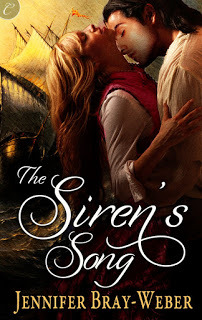 A steamy escape! Get your copy HERE.Tobacco rum had, you guessed it, rum mixed with tobacco. The tobacco gave the rum a smoky, earthy flavor. If the tobacco was stale, the rum would also be a bit bitter.
A steamy escape! Get your copy HERE.Tobacco rum had, you guessed it, rum mixed with tobacco. The tobacco gave the rum a smoky, earthy flavor. If the tobacco was stale, the rum would also be a bit bitter.Another odd liquor blend had nabbed my inspiration. Indulge me for a moment. In The Siren’s Song, the 3rd full-length novel in my Romancing the Pirate series, pirate Captain Thayer Drake’s rum drinking is one battle he can’t seem to win. Perhaps Gilly, the beautiful songstress he saved from drowning, will help him kick the habit. But not after one particularly exasperating evening with her. Instead, he hits the bottle harder than usual, stirring gunpowder into his rum. Gunpowder rum? Yes, pirates did do this. Gunpowder contains saltpeter which was believed to deaden sexual desires. It was also thought to inspire courage and aggression before heading off into battle.
Oh yes, pirates loved their sauce. Perhaps it was pirate Richard Hains who said it best with this sentiment. “A life without liberty is not worth living. But a life with liberty and no beer mug ain’t much better.” Hear! Hear!
About the Author Jennifer is the award-winning author of the Romancing the Pirate series. Visit her at www.jbrayweber.com or join her mailing list for sneak peeks, excerpts, and giveaways.
Published on November 14, 2017 01:30
November 1, 2017
Part Four: History of Medicinal Herbs
Hi, everyone! Madeline Martin and Eliza Knight here again with PART FOUR the final post of our 4-part series. We’re sorry you weren’t able to attend our History of Medicinal Herbs class at the Historical Romance Retreat in Spokane, WA this year. There was so much interest in this class that we decided to do a blog post here so everyone can enjoy. But there is so much to share, we’ve decided to break it down into four fun parts! Check back weekly! If you missed Part One, click to read it, to read Part Two, click here! To read Part Three CLICK!

Please note several things: We aren’t doctors, we aren’t even healers. Pretty much, we’re authors who make stuff up for a living and enjoy researching historical tidbits to share (especially the crazy ones). Do not try any of these herbs without consulting a doctor first.Yes, there is WAY more information about all the herbs we’re going to mention, and there are WAY more herbs than we list. However, it was an hour long class, and there really are only so many appropriate memes.We focused mainly on herbs we had on hand to do a fun show-and-tell with. Obviously being online you can’t see, touch, or smell these herbs. For that, we are humbly sorry (except we really feel we are owed a huge thanks on your part regarding the valerian root – just saying)A brief intro about ourselves if you missed it in Part One...
This is the voice of Eliza Knight (yes, I totally just did that with my hands cupped around my mouth, because I’m a dork like that). I have always been fascinated by healing herbs and ways to heal the body naturally. It’s amazing how many things we did back in the day, that we still do now (and also a lot we figured out were a bad idea!) Because that is a part of my “real life,” I have added it to many of my books. Several of my heroines are able to use healing herbs to help people, and some use them as poisons. My favorite two herbal heroines are Shona from HIGHLANDER’S TOUCH and Julianna from THE HIGHLAND WARRIOR’S BRIDE. Shona is a healer, and is often called to the castle and village to help people, but she has also been nicknamed the Witch of the Wood, since people were so suspicious of women who could heal with herbs. Julianna, uses her herbal knowledge for good & bad. She’s a warrior, and uses poisons on her weapons.
So, for Madeline Martin (yeah, I totally just referred to myself in third person to keep this from getting confusing) – I decided I would write a female healer as they’ve always fascinated me. Celia (from Enchantment of a Highlander) was not only a healer, but a survivor of the North Berwick Witch Trials (it’s sad and fascinating and the history dork in me demands you look it up). In order to write a healer though, I wanted to have the full experience of what she might go through, so I decided to start doing all natural bath and body products. It opened the door to this incredible interest and now all you nice folks will be subjected to our findings. J
Last week I introduced you to some of the poisonous herbs and how they can help... or not. Let's continue the: too much of a good thing can actually kill you… And sometimes it was on purpose discussion! Oh, and I'm going to give you some information on antidotes, too!*Please note: we’re pretty certain poisoning on any level is a felony so just keep it in your reading and writing!*
Deadly Nightshade
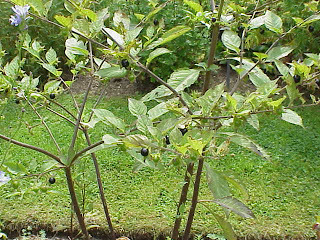
Also known as belladonna. The deadly nightshade plant is made up of beautiful berries that look and taste sweet. But beware!
One of the deadliest plants out there, its leaves, roots, flowers and berries are all poisonous. And the sad part is the berries are very attractive and tasty--but deadly. Many children are poisoned throughout the year by eating the juicy, delicious berries.
Used for nefarious purposes or in an accidental overdose, nightshade can be the end for any person. The poison juice from the plant was used on weapons throughout history.
If ingested, the symptoms of poisoning present quickly and include: dilated pupils, sensitivity to light, blurred vision, accelerated heart rate, loss of balance/vertigo, headache, rash, flushing, severely dry mouth and throat, slurred speech, inability to urinate, constipation, hallucinations, delirium, and convulsions.
However, it was also used for medicine! Wait, what? Scary! Belladonna can be used to relieve pain, as a muscle relaxer, an anti-inflammatory, and also to treat menstrual problems, ulcers, and motion sickness.
Fun fact #1: Macbeth of Scotland, when he was still one of the lieutenants of King Duncan I of Scotland, used it during a truce to poison the troops of the invading King of England (Harold Harefoot), to the point that the English troops were unable to stand their ground and had to retreat to their ships.
Fun fact #2: It is suggested that in Romeo and Juliet, Juliet drank the juice of a deadly nightshade berry to fall into her deathlike sleep.
Monkshood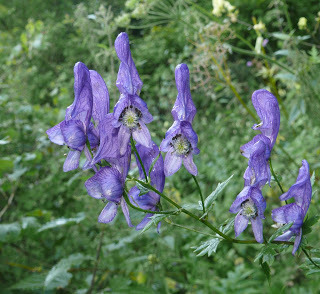
Also known as wolfsbane, monkshood helps reduce fever and kills viruses. So why is it listed in our poison herbs section? Because it also kills humans...
Historically, monkshood was used for fevers. It is also considered an antibacterial, antifungal, and antiviral.
Symptoms of monkshood poisoning may appear almost immediately, usually not more than an hour later. Death can occur within 2-6 hours with a fatal poisoning. Large doses can produce death almost instantaneously. The initial signs include: nausea, vomiting, and diarrhea, followed by a sensation of burning in the abdomen, burning, tingling, and numbness inside the mouth and on the face. In severe cases, motor weakness occurs and sensations of tingling and numbness will spread to the limbs. The heart rate will increase and become irregular. Other symptoms may include sweating, dizziness, difficulty in breathing, headache, and confusion.
Fun fact: It is suggested that this would be the poison Romeo used to end his life in the tragic play.

Oleander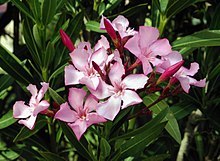
Don’t let the prettiness of the petals fool you! All parts of the plant can be deadly! Helpful tip: don’t use the sticks for your camping cookout...
Symptoms of oleander poisoning include: severe vomiting and diarrhea, sweating, coma, heart attack, and seizures.
How can something like that be helpful you ask?
Allegedly, oleander can be used as an antidote to a snakebite… A poultice of the “fruit” can produce sweating to break a fever. A salve can be used for relieve back pain…
The Babylonians and Romans used a mixture of oleander and licorice to treat hangovers. Pliny, the Elder of ancient Greece, wrote about the appearance and medicinal properties of oleander.
“But ye flower and the leaves have a power destructive of dogs & of Asses & of Mules & and of most four-footed living creatures, but a preserving one of men, being drank with wine against the bitings of venemous beasts & ye more if you mixed it with Rue, but ye more weak sort of living creature, as goats & sheep, die, if they drink ye maceration of them.” ~Dioscorides, De Materia Medica, Book IV, 82
Anitdotes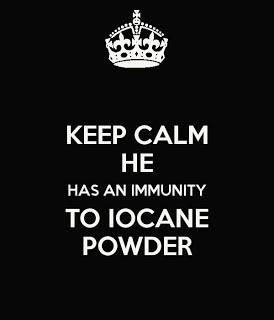
No, there is no such thing as iocane powder… So, though we all love the Dread Pirate Roberts, we can’t build up an immunity to it like he did…
But there were antidotes to poisons—sometimes. Below I list some of the most common antidotes! 1. Vomiting. 2. Prayer3. Commonly used antidotes for certain toxins were: a. mulberry leaves boiled in vinegar to combat henbaneb. garlic for serpent's bitesc. frankincense for hemlock. d. Commonly thought to cure any poison: fennel seeds boiled in wine, mugwort, mallow, meadowsweet, lovage.e. Oddly enough, some extremely toxic plants were considered to be effective antidotes.4. To avoid being poisoned royals/nobles often had taste testers. They would avoid new or unfamiliar foods. Gemstones, amulets, special cups, charms and prayers were also used.5. When in doubt—pee on it.6. If you feel you are suffering from poison—call 911.
6. If you feel you are suffering from poison—call 911.Subscribe to our newsletters for another awesome recipe! Mid-October, we sent out the healing balm recipe (which was also posted here), and in mid-November, we will sent out a pet paw ointment recipe for the coming winter!
Madeline: http://eepurl.com/biji1jEliza: http://eepurl.com/CSFFD
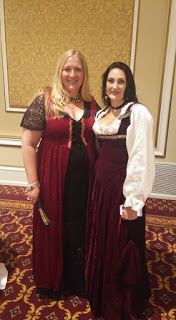 Eliza Knight & Madeline Martin at the Historical Romance Retreat
Eliza Knight & Madeline Martin at the Historical Romance Retreat
ABOUT MADELINE MARTIN:
Madeline Martin is a USA TODAY Bestselling author of Scottish set historical romance novels. She lives a glitter-filled life in Jacksonville, Florida with her two daughters (known collectively as the minions) and a man so wonderful he's been dubbed Mr. Awesome. All shenanigans are detailed regularly on Twitter and on Facebook.
Madeline loves animals in sweaters, cat videos, wine and Nutella. Check out her FB page on any given Friday to see what great new book she's giving away by one of her fellow authors.
She also loves connecting with her readers, so feel free to follow her on any one of her social media platforms, or send her a message :)
FB page: https://www.facebook.com/MadelineMart... @MadelineMMartin
ABOUT ELIZA KNIGHT:
Eliza Knight is an award-winning and USA Today bestselling indie author of over fifty sizzling historical romance and erotic romance. Under the name E. Knight, she pens rip-your-heart-out historical fiction. While not reading, writing or researching for her latest book, she chases after her three children. In her spare time (if there is such a thing…) she likes daydreaming, wine-tasting, traveling, hiking, staring at the stars, watching movies, shopping and visiting with family and friends. She lives atop a small mountain with her own knight in shining armor, three princesses and two very naughty puppies.
Website: www.elizaknight.comBlog: www.historyundressed.comFacebook: www.facebook.com/elizaknightfictionTwitter: @ElizaKnightInstagram: @ElizaKnightFiction

Please note several things: We aren’t doctors, we aren’t even healers. Pretty much, we’re authors who make stuff up for a living and enjoy researching historical tidbits to share (especially the crazy ones). Do not try any of these herbs without consulting a doctor first.Yes, there is WAY more information about all the herbs we’re going to mention, and there are WAY more herbs than we list. However, it was an hour long class, and there really are only so many appropriate memes.We focused mainly on herbs we had on hand to do a fun show-and-tell with. Obviously being online you can’t see, touch, or smell these herbs. For that, we are humbly sorry (except we really feel we are owed a huge thanks on your part regarding the valerian root – just saying)A brief intro about ourselves if you missed it in Part One...
This is the voice of Eliza Knight (yes, I totally just did that with my hands cupped around my mouth, because I’m a dork like that). I have always been fascinated by healing herbs and ways to heal the body naturally. It’s amazing how many things we did back in the day, that we still do now (and also a lot we figured out were a bad idea!) Because that is a part of my “real life,” I have added it to many of my books. Several of my heroines are able to use healing herbs to help people, and some use them as poisons. My favorite two herbal heroines are Shona from HIGHLANDER’S TOUCH and Julianna from THE HIGHLAND WARRIOR’S BRIDE. Shona is a healer, and is often called to the castle and village to help people, but she has also been nicknamed the Witch of the Wood, since people were so suspicious of women who could heal with herbs. Julianna, uses her herbal knowledge for good & bad. She’s a warrior, and uses poisons on her weapons.
So, for Madeline Martin (yeah, I totally just referred to myself in third person to keep this from getting confusing) – I decided I would write a female healer as they’ve always fascinated me. Celia (from Enchantment of a Highlander) was not only a healer, but a survivor of the North Berwick Witch Trials (it’s sad and fascinating and the history dork in me demands you look it up). In order to write a healer though, I wanted to have the full experience of what she might go through, so I decided to start doing all natural bath and body products. It opened the door to this incredible interest and now all you nice folks will be subjected to our findings. J
Last week I introduced you to some of the poisonous herbs and how they can help... or not. Let's continue the: too much of a good thing can actually kill you… And sometimes it was on purpose discussion! Oh, and I'm going to give you some information on antidotes, too!*Please note: we’re pretty certain poisoning on any level is a felony so just keep it in your reading and writing!*
Deadly Nightshade

Also known as belladonna. The deadly nightshade plant is made up of beautiful berries that look and taste sweet. But beware!
One of the deadliest plants out there, its leaves, roots, flowers and berries are all poisonous. And the sad part is the berries are very attractive and tasty--but deadly. Many children are poisoned throughout the year by eating the juicy, delicious berries.
Used for nefarious purposes or in an accidental overdose, nightshade can be the end for any person. The poison juice from the plant was used on weapons throughout history.
If ingested, the symptoms of poisoning present quickly and include: dilated pupils, sensitivity to light, blurred vision, accelerated heart rate, loss of balance/vertigo, headache, rash, flushing, severely dry mouth and throat, slurred speech, inability to urinate, constipation, hallucinations, delirium, and convulsions.
However, it was also used for medicine! Wait, what? Scary! Belladonna can be used to relieve pain, as a muscle relaxer, an anti-inflammatory, and also to treat menstrual problems, ulcers, and motion sickness.
Fun fact #1: Macbeth of Scotland, when he was still one of the lieutenants of King Duncan I of Scotland, used it during a truce to poison the troops of the invading King of England (Harold Harefoot), to the point that the English troops were unable to stand their ground and had to retreat to their ships.
Fun fact #2: It is suggested that in Romeo and Juliet, Juliet drank the juice of a deadly nightshade berry to fall into her deathlike sleep.
Monkshood

Also known as wolfsbane, monkshood helps reduce fever and kills viruses. So why is it listed in our poison herbs section? Because it also kills humans...
Historically, monkshood was used for fevers. It is also considered an antibacterial, antifungal, and antiviral.
Symptoms of monkshood poisoning may appear almost immediately, usually not more than an hour later. Death can occur within 2-6 hours with a fatal poisoning. Large doses can produce death almost instantaneously. The initial signs include: nausea, vomiting, and diarrhea, followed by a sensation of burning in the abdomen, burning, tingling, and numbness inside the mouth and on the face. In severe cases, motor weakness occurs and sensations of tingling and numbness will spread to the limbs. The heart rate will increase and become irregular. Other symptoms may include sweating, dizziness, difficulty in breathing, headache, and confusion.
Fun fact: It is suggested that this would be the poison Romeo used to end his life in the tragic play.

Oleander

Don’t let the prettiness of the petals fool you! All parts of the plant can be deadly! Helpful tip: don’t use the sticks for your camping cookout...
Symptoms of oleander poisoning include: severe vomiting and diarrhea, sweating, coma, heart attack, and seizures.
How can something like that be helpful you ask?
Allegedly, oleander can be used as an antidote to a snakebite… A poultice of the “fruit” can produce sweating to break a fever. A salve can be used for relieve back pain…
The Babylonians and Romans used a mixture of oleander and licorice to treat hangovers. Pliny, the Elder of ancient Greece, wrote about the appearance and medicinal properties of oleander.
“But ye flower and the leaves have a power destructive of dogs & of Asses & of Mules & and of most four-footed living creatures, but a preserving one of men, being drank with wine against the bitings of venemous beasts & ye more if you mixed it with Rue, but ye more weak sort of living creature, as goats & sheep, die, if they drink ye maceration of them.” ~Dioscorides, De Materia Medica, Book IV, 82
Anitdotes

No, there is no such thing as iocane powder… So, though we all love the Dread Pirate Roberts, we can’t build up an immunity to it like he did…
But there were antidotes to poisons—sometimes. Below I list some of the most common antidotes! 1. Vomiting. 2. Prayer3. Commonly used antidotes for certain toxins were: a. mulberry leaves boiled in vinegar to combat henbaneb. garlic for serpent's bitesc. frankincense for hemlock. d. Commonly thought to cure any poison: fennel seeds boiled in wine, mugwort, mallow, meadowsweet, lovage.e. Oddly enough, some extremely toxic plants were considered to be effective antidotes.4. To avoid being poisoned royals/nobles often had taste testers. They would avoid new or unfamiliar foods. Gemstones, amulets, special cups, charms and prayers were also used.5. When in doubt—pee on it.6. If you feel you are suffering from poison—call 911.
6. If you feel you are suffering from poison—call 911.Subscribe to our newsletters for another awesome recipe! Mid-October, we sent out the healing balm recipe (which was also posted here), and in mid-November, we will sent out a pet paw ointment recipe for the coming winter!
Madeline: http://eepurl.com/biji1jEliza: http://eepurl.com/CSFFD
 Eliza Knight & Madeline Martin at the Historical Romance Retreat
Eliza Knight & Madeline Martin at the Historical Romance Retreat ABOUT MADELINE MARTIN:
Madeline Martin is a USA TODAY Bestselling author of Scottish set historical romance novels. She lives a glitter-filled life in Jacksonville, Florida with her two daughters (known collectively as the minions) and a man so wonderful he's been dubbed Mr. Awesome. All shenanigans are detailed regularly on Twitter and on Facebook.
Madeline loves animals in sweaters, cat videos, wine and Nutella. Check out her FB page on any given Friday to see what great new book she's giving away by one of her fellow authors.
She also loves connecting with her readers, so feel free to follow her on any one of her social media platforms, or send her a message :)
FB page: https://www.facebook.com/MadelineMart... @MadelineMMartin
ABOUT ELIZA KNIGHT:
Eliza Knight is an award-winning and USA Today bestselling indie author of over fifty sizzling historical romance and erotic romance. Under the name E. Knight, she pens rip-your-heart-out historical fiction. While not reading, writing or researching for her latest book, she chases after her three children. In her spare time (if there is such a thing…) she likes daydreaming, wine-tasting, traveling, hiking, staring at the stars, watching movies, shopping and visiting with family and friends. She lives atop a small mountain with her own knight in shining armor, three princesses and two very naughty puppies.
Website: www.elizaknight.comBlog: www.historyundressed.comFacebook: www.facebook.com/elizaknightfictionTwitter: @ElizaKnightInstagram: @ElizaKnightFiction
Published on November 01, 2017 00:30
October 27, 2017
Spotlight on Kris Kennedy's DECEPTION
So happy to be here with Eliza today, hanging with you, my fellow historical romance loving peeps!
I’ve got a new release this week, Deception! Smugglers and sword fights and sexytimes, oh my!
It’s a big, epic, hot-hot-hot medieval adventure, a second chance romance with an Irishman on a mission of revenge and the woman who can bring the whole thing crashing down around him.

First he loved her. Then he abandoned her. Now he’s the only one who can save her.
The hero, Kier, is a black-hearted Irishman working a long con against some Very Bad Men who once tried to destroy him (there were smugglers’ huts and ropes and incinerating fires). Kier rebuilt himself mind and body and now he’s back, on the hunt for retribution. Everything’s going according to plan…until Sophia shows up.
He’s shocked and stunned by the reappearance of the only woman he’s ever cared for (he can’t call it love…he doesn’t know the meaning of the word yet). But Sophia has her own desperate plans too, and when she forces her way into his schemes, Kier is furious.
But Sophia is so very, very good at charming the people Kier needs charmed, and he’s a risk-taker to the bottom of his heart, so he’s not above using her. But he will never, ever protect her. It’s a most solemn vow.
I'm sure it’ll all work out. After all, they're two adults, one on a mission of vengeance, the other on the run from the most dangerous men in England. They both want the same thing. Only one of them can have it.
Oh, and they want each other with a scorching hot desire that won't be denied. What could possibly go wrong??
Come find out!
http://www.kriskennedy.net/DeceptionAmazonw
http://www.kriskennedy.net/DeceptionKobow
http://www.kriskennedy.net/DeceptionNookw
I thought you might like an excerpt!
*** DECEPTION
...Kier turned and stared through the open doorway at her.
He looked like sin. His hair was dripping dark and wet over his face. His clothes were molded to him, his tunic slack with rain, pressed to his body, his breeches tight, his black boots gleaming, as were the dark eyes he pinned on her.
“Where were you going, Sophia?”
His words were quiet and low, but they unleashed a shiver through her body, prickling her skin from chest to belly.
He advanced a step. “Where were you going with the ledger?”
“Kier,” she said in a low, warning tone.
He kicked the door shut behind him.
“Kier, stop,” she said firmly, but the resolve in her words was belied by the way she started backing up, one hand stretched out behind her, feeling for obstacles. She bumped into a bench and backed around it.
“Where were you going?” His eyes never left hers as he shoved the bench out of his way. “To Cosimo? Or had you others in mind? Perhaps you meant to sell it to the highest bidder?"
"Kier, stop."
"Surely you could have offered me rights of first refusal, could you not, now?” His Irish was getting stronger as his emotions ratcheted up. Jagged chills raked across her chest, a saw-edge of fear.
She shook her head wildly and tripped backward another step. The back of her knees hit the bed and she dropped onto it. “Kier, no, you must see—”
“See what? Perhaps you were evening the score, aye? I left you, now you leave me?”
She scooted across the bed, pushing with her elbows and heels. “No, ’tisn’t—”
He closed his fingers around her ankle.
“Oh, Jésu,” she whispered as he pulled her toward him, bundling the sheets beneath her, until she was laid out beneath his towering body.
His eyes were like fury, his face like stone. “You erred, lass,” he rasped.
She stifled a scream, kicked hard into him, and launched herself over the bed and took off running for the door. She made it two steps before his arm closed around her waist, stopping her like an iron bar. He yanked her back into his chest and the raw, barely-restrained power of him.
"You wanted to negotiate? Let's negotiate," he said, his breath hot in her ear.
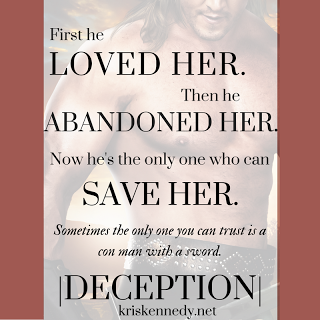
***I love big, sexy, adventure romances with reluctant heroes and smart, feisty women who push their buttons, so if you do too, you might like the stories too!You can check out Deception right now!
http://www.kriskennedy.net/DeceptionAmazonw
http://www.kriskennedy.net/DeceptionKobow
http://www.kriskennedy.net/DeceptionNookw
Unfortunately, iBooks and GooglePlay are being difficult, so they’re not live there yet. But you can sign up for the newsletter to get informed when they are!And stop by the website for all links and loads of excerpts from all the books (including the first 4 chapters of DECEPTION!)Kriskennedy.net
How about you?? What’s your favorite kind of historical romance?
Kris Kennedy is a USA Today bestselling author writing super sexy, adventure-laden historical romances set in England and Ireland during the ages when chivalry and bad boy knights reigned supreme. They're hot, epic romances with big bad alpha heroes and strong, fiery heroines who aren't afraid of them (well maybe just a little afraid...)
Come on in and indulge! Ride the king’s highway on horseback and visit smugglers caves. Travel to medieval France & England & Ireland, and get a taste of the Holy Lands. Visit sea towns shrouded in darkness...sneak into hidden caves...sail on ships…get snowbound in a firelit cottage with no one but a dangerous outlaw and the way he’s looking at you, firelight glinting in his eye.
You can do it all in the books!Have fun in there! Kriskennedy.net
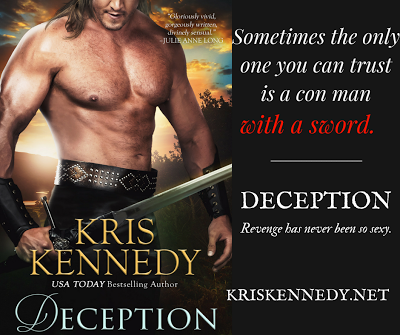
Published on October 27, 2017 00:00
October 25, 2017
Part Three: History of Medicinal Herbs
Hi, everyone! Madeline Martin and Eliza Knight here again with PART THREE of our 4-part series. We’re sorry you weren’t able to attend our History of Medicinal Herbs class at the Historical Romance Retreat in Spokane, WA this year. There was so much interest in this class that we decided to do a blog post here so everyone can enjoy. But there is so much to share, we’ve decided to break it down into four fun parts! Check back weekly! If you missed Part One, click to read it and to read Part Two, click here!

Please note several things: We aren’t doctors, we aren’t even healers. Pretty much, we’re authors who make stuff up for a living and enjoy researching historical tidbits to share (especially the crazy ones). Do not try any of these herbs without consulting a doctor first.Yes, there is WAY more information about all the herbs we’re going to mention, and there are WAY more herbs than we list. However, it was an hour long class, and there really are only so many appropriate memes.We focused mainly on herbs we had on hand to do a fun show-and-tell with. Obviously being online you can’t see, touch, or smell these herbs. For that, we are humbly sorry (except we really feel we are owed a huge thanks on your part regarding the valerian root – just saying)A brief intro about ourselves if you missed it in Part One...
This is the voice of Eliza Knight (yes, I totally just did that with my hands cupped around my mouth, because I’m a dork like that). I have always been fascinated by healing herbs and ways to heal the body naturally. It’s amazing how many things we did back in the day, that we still do now (and also a lot we figured out were a bad idea!) Because that is a part of my “real life,” I have added it to many of my books. Several of my heroines are able to use healing herbs to help people, and some use them as poisons. My favorite two herbal heroines are Shona from HIGHLANDER’S TOUCH and Julianna from THE HIGHLAND WARRIOR’S BRIDE. Shona is a healer, and is often called to the castle and village to help people, but she has also been nicknamed the Witch of the Wood, since people were so suspicious of women who could heal with herbs. Julianna, uses her herbal knowledge for good & bad. She’s a warrior, and uses poisons on her weapons.
So, for Madeline Martin (yeah, I totally just referred to myself in third person to keep this from getting confusing) – I decided I would write a female healer as they’ve always fascinated me. Celia (from Enchantment of a Highlander) was not only a healer, but a survivor of the North Berwick Witch Trials (it’s sad and fascinating and the history dork in me demands you look it up). In order to write a healer though, I wanted to have the full experience of what she might go through, so I decided to start doing all natural bath and body products. It opened the door to this incredible interest and now all you nice folks will be subjected to our findings. J

Too much of a good thing can actually kill you… And sometimes it was on purpose. Let’s talk a little bit about poisonous herbs and how they can help... or not.
*Please note: we’re pretty certain poisoning on any level is a felony so just keep it in your reading and writing!*
Horseradish
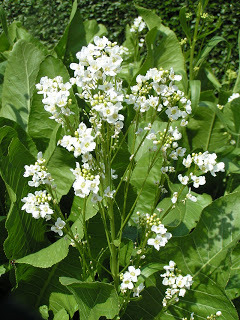
Want to make your characters sweat? When infused with wine, horseradish can produce sweating!
Ground up and kept in an airtight container, you can create a noxious gas. There is a component to horseradish that gives it a super hot powers when chewed called sinigrin. This compound can be calmed by using vinegar (which is how horseradish sauce and wasabi are made), but if you don’t calm it down, you can literally set your mouth on fire, burn your lungs and become nauseas. This same thing can happen if you breathe it in after it's been ground up and kept in an airtight container. Check out Justin Brower’s account!
On a good note, horseradish has some healing properties, too. In Europe, during the middle ages, horseradish was used as a cough expectorant and treatment for food poisoning, scurvy, tuberculosis, worms, and colic.
Nettles
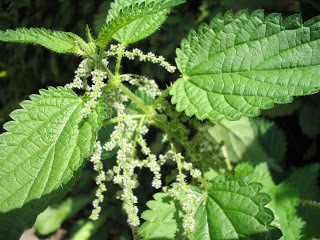
Don’t touch or you’ll be sorry! But, if you need a diuretic, look no further!
The hairs on the nettles aret like little needles that get beneath your skin to inject the plant’s formic acid, aka “poison,” which can leave a stinging/burning sensation and rash for hours.
Need to get your characters bowels/bladder moving? The root or leaves crushed into a tincture could be used as a diuretic.
Mushrooms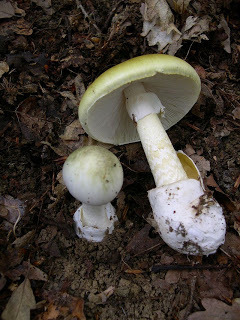

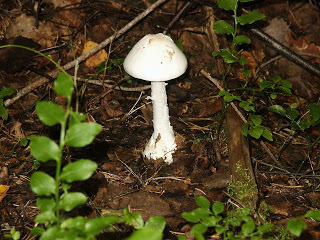
They look so innocent… just like any other mushroom… Don’t let their soft white caps trick you! Known as the Death Cap or Destroying Angel, one half of a poisonous mushroom can take down a man.
Knowing your mushrooms is key as they are also clearly a food. So, before you go foraging in the forest, do your research!
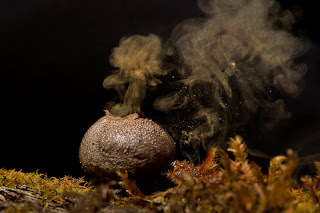
Funny enough, the puffball mushroom looks poisonous but it isn’t. It can be eaten, and its inner tissues can be applied to wounds to stop bleeding. Burning the puffballs creates a smoke that was often used to stupefy bees in order for our ancestors to collect their honey.
What happens if you eat a poisonous mushroom? Or are injured by a weapon covered in mushroom juice? A person typically won’t experience symptoms for at least a few hours, and sometimes as much as an entire day. Eventually, abdominal cramps, vomiting, and severely dehydrating diarrhea can occur. Because of the delay, a person may be wrongly diagnosed with the flu or some other benign illness. To make matters worse, if the whoever ingested the mushroom remains somewhat hydrated, their symptoms can lessen, creating the false appearance of getting well. Meanwhile, the poison from the mushroom stealthily destroys their liver. Without proper treatment, the character can experience rapid organ failure, coma, and death.
Allegedly, Agrippina, the fourth wife of Emperor Claudius, killed her husband by feeding him poisoned mushrooms.
Hemlock
Extremely poisonous, hemlock was once used to execute prisoners in Greece.
There is not one part of the hemlock plant that is safe. Hemlock causes a gradual weakening of the muscles and intense pain as the muscles deteriorate and die. Though sight might be lost, the mind remains clear until death occurs. Symptoms begin in thirty minutes, though it takes several hours to die.
If you’re looking for a couple of ways to use hemlock poisoning in your fictional work, you could add the leaves to a salad or other fine dish. And very interestingly enough, quail can eat hemlock seeds without effect from the poison. However, the flesh of the bird then becomes poisonous. If someone were to eat the bird, it would be enough to give a person convulsions, vertigo, paralysis and even death.
For medicinal purposes, hemlock can be used as a sedative and antispasmodic (and to induce paralysis). In mediaeval days, Hemlock mixed with betony and fennel seed was considered a cure for the bite of a rabid dog.
Because of its sedative properties, hemlock juice was prescribed as a remedy for teething in children and epilepsy. As an inhalant, it was believed to relieve whooping-cough and other lung afflictions.
Famed botanist of the 17th century, William Coles wrote in his book, The Art of Simpling:
'If Asses chance to feed much upon Hemlock, they will fall so fast asleep that they will seeme to be dead, in so much that some thinking them to be dead indeed have flayed off their skins, yet after the Hemlock had done operating they have stirred and wakened out of their sleep, to the griefe and amazement of the owners.'
 More next week! Plus antidotes!
More next week! Plus antidotes!
Subscribe to our newsletters for another awesome recipe! Mid-October, we sent out the healing balm recipe (which was also posted here), and in mid-November, we will sent out a pet paw ointment recipe for the coming winter!
Madeline: http://eepurl.com/biji1jEliza: http://eepurl.com/CSFFD
 Eliza Knight & Madeline Martin at the Historical Romance Retreat
Eliza Knight & Madeline Martin at the Historical Romance Retreat
ABOUT MADELINE MARTIN:
Madeline Martin is a USA TODAY Bestselling author of Scottish set historical romance novels. She lives a glitter-filled life in Jacksonville, Florida with her two daughters (known collectively as the minions) and a man so wonderful he's been dubbed Mr. Awesome. All shenanigans are detailed regularly on Twitter and on Facebook.
Madeline loves animals in sweaters, cat videos, wine and Nutella. Check out her FB page on any given Friday to see what great new book she's giving away by one of her fellow authors.
She also loves connecting with her readers, so feel free to follow her on any one of her social media platforms, or send her a message :)
FB page: https://www.facebook.com/MadelineMart... @MadelineMMartin
ABOUT ELIZA KNIGHT:
Eliza Knight is an award-winning and USA Today bestselling indie author of over fifty sizzling historical romance and erotic romance. Under the name E. Knight, she pens rip-your-heart-out historical fiction. While not reading, writing or researching for her latest book, she chases after her three children. In her spare time (if there is such a thing…) she likes daydreaming, wine-tasting, traveling, hiking, staring at the stars, watching movies, shopping and visiting with family and friends. She lives atop a small mountain with her own knight in shining armor, three princesses and two very naughty puppies.
Website: www.elizaknight.comBlog: www.historyundressed.comFacebook: www.facebook.com/elizaknightfictionTwitter: @ElizaKnightInstagram: @ElizaKnightFiction

Please note several things: We aren’t doctors, we aren’t even healers. Pretty much, we’re authors who make stuff up for a living and enjoy researching historical tidbits to share (especially the crazy ones). Do not try any of these herbs without consulting a doctor first.Yes, there is WAY more information about all the herbs we’re going to mention, and there are WAY more herbs than we list. However, it was an hour long class, and there really are only so many appropriate memes.We focused mainly on herbs we had on hand to do a fun show-and-tell with. Obviously being online you can’t see, touch, or smell these herbs. For that, we are humbly sorry (except we really feel we are owed a huge thanks on your part regarding the valerian root – just saying)A brief intro about ourselves if you missed it in Part One...
This is the voice of Eliza Knight (yes, I totally just did that with my hands cupped around my mouth, because I’m a dork like that). I have always been fascinated by healing herbs and ways to heal the body naturally. It’s amazing how many things we did back in the day, that we still do now (and also a lot we figured out were a bad idea!) Because that is a part of my “real life,” I have added it to many of my books. Several of my heroines are able to use healing herbs to help people, and some use them as poisons. My favorite two herbal heroines are Shona from HIGHLANDER’S TOUCH and Julianna from THE HIGHLAND WARRIOR’S BRIDE. Shona is a healer, and is often called to the castle and village to help people, but she has also been nicknamed the Witch of the Wood, since people were so suspicious of women who could heal with herbs. Julianna, uses her herbal knowledge for good & bad. She’s a warrior, and uses poisons on her weapons.
So, for Madeline Martin (yeah, I totally just referred to myself in third person to keep this from getting confusing) – I decided I would write a female healer as they’ve always fascinated me. Celia (from Enchantment of a Highlander) was not only a healer, but a survivor of the North Berwick Witch Trials (it’s sad and fascinating and the history dork in me demands you look it up). In order to write a healer though, I wanted to have the full experience of what she might go through, so I decided to start doing all natural bath and body products. It opened the door to this incredible interest and now all you nice folks will be subjected to our findings. J

Too much of a good thing can actually kill you… And sometimes it was on purpose. Let’s talk a little bit about poisonous herbs and how they can help... or not.
*Please note: we’re pretty certain poisoning on any level is a felony so just keep it in your reading and writing!*
Horseradish


Want to make your characters sweat? When infused with wine, horseradish can produce sweating!
Ground up and kept in an airtight container, you can create a noxious gas. There is a component to horseradish that gives it a super hot powers when chewed called sinigrin. This compound can be calmed by using vinegar (which is how horseradish sauce and wasabi are made), but if you don’t calm it down, you can literally set your mouth on fire, burn your lungs and become nauseas. This same thing can happen if you breathe it in after it's been ground up and kept in an airtight container. Check out Justin Brower’s account!
On a good note, horseradish has some healing properties, too. In Europe, during the middle ages, horseradish was used as a cough expectorant and treatment for food poisoning, scurvy, tuberculosis, worms, and colic.
Nettles

Don’t touch or you’ll be sorry! But, if you need a diuretic, look no further!
The hairs on the nettles aret like little needles that get beneath your skin to inject the plant’s formic acid, aka “poison,” which can leave a stinging/burning sensation and rash for hours.
Need to get your characters bowels/bladder moving? The root or leaves crushed into a tincture could be used as a diuretic.

Mushrooms



They look so innocent… just like any other mushroom… Don’t let their soft white caps trick you! Known as the Death Cap or Destroying Angel, one half of a poisonous mushroom can take down a man.
Knowing your mushrooms is key as they are also clearly a food. So, before you go foraging in the forest, do your research!

Funny enough, the puffball mushroom looks poisonous but it isn’t. It can be eaten, and its inner tissues can be applied to wounds to stop bleeding. Burning the puffballs creates a smoke that was often used to stupefy bees in order for our ancestors to collect their honey.
What happens if you eat a poisonous mushroom? Or are injured by a weapon covered in mushroom juice? A person typically won’t experience symptoms for at least a few hours, and sometimes as much as an entire day. Eventually, abdominal cramps, vomiting, and severely dehydrating diarrhea can occur. Because of the delay, a person may be wrongly diagnosed with the flu or some other benign illness. To make matters worse, if the whoever ingested the mushroom remains somewhat hydrated, their symptoms can lessen, creating the false appearance of getting well. Meanwhile, the poison from the mushroom stealthily destroys their liver. Without proper treatment, the character can experience rapid organ failure, coma, and death.
Allegedly, Agrippina, the fourth wife of Emperor Claudius, killed her husband by feeding him poisoned mushrooms.
Hemlock

Extremely poisonous, hemlock was once used to execute prisoners in Greece.
There is not one part of the hemlock plant that is safe. Hemlock causes a gradual weakening of the muscles and intense pain as the muscles deteriorate and die. Though sight might be lost, the mind remains clear until death occurs. Symptoms begin in thirty minutes, though it takes several hours to die.
If you’re looking for a couple of ways to use hemlock poisoning in your fictional work, you could add the leaves to a salad or other fine dish. And very interestingly enough, quail can eat hemlock seeds without effect from the poison. However, the flesh of the bird then becomes poisonous. If someone were to eat the bird, it would be enough to give a person convulsions, vertigo, paralysis and even death.
For medicinal purposes, hemlock can be used as a sedative and antispasmodic (and to induce paralysis). In mediaeval days, Hemlock mixed with betony and fennel seed was considered a cure for the bite of a rabid dog.
Because of its sedative properties, hemlock juice was prescribed as a remedy for teething in children and epilepsy. As an inhalant, it was believed to relieve whooping-cough and other lung afflictions.
Famed botanist of the 17th century, William Coles wrote in his book, The Art of Simpling:
'If Asses chance to feed much upon Hemlock, they will fall so fast asleep that they will seeme to be dead, in so much that some thinking them to be dead indeed have flayed off their skins, yet after the Hemlock had done operating they have stirred and wakened out of their sleep, to the griefe and amazement of the owners.'
 More next week! Plus antidotes!
More next week! Plus antidotes! Subscribe to our newsletters for another awesome recipe! Mid-October, we sent out the healing balm recipe (which was also posted here), and in mid-November, we will sent out a pet paw ointment recipe for the coming winter!
Madeline: http://eepurl.com/biji1jEliza: http://eepurl.com/CSFFD
 Eliza Knight & Madeline Martin at the Historical Romance Retreat
Eliza Knight & Madeline Martin at the Historical Romance Retreat ABOUT MADELINE MARTIN:
Madeline Martin is a USA TODAY Bestselling author of Scottish set historical romance novels. She lives a glitter-filled life in Jacksonville, Florida with her two daughters (known collectively as the minions) and a man so wonderful he's been dubbed Mr. Awesome. All shenanigans are detailed regularly on Twitter and on Facebook.
Madeline loves animals in sweaters, cat videos, wine and Nutella. Check out her FB page on any given Friday to see what great new book she's giving away by one of her fellow authors.
She also loves connecting with her readers, so feel free to follow her on any one of her social media platforms, or send her a message :)
FB page: https://www.facebook.com/MadelineMart... @MadelineMMartin
ABOUT ELIZA KNIGHT:
Eliza Knight is an award-winning and USA Today bestselling indie author of over fifty sizzling historical romance and erotic romance. Under the name E. Knight, she pens rip-your-heart-out historical fiction. While not reading, writing or researching for her latest book, she chases after her three children. In her spare time (if there is such a thing…) she likes daydreaming, wine-tasting, traveling, hiking, staring at the stars, watching movies, shopping and visiting with family and friends. She lives atop a small mountain with her own knight in shining armor, three princesses and two very naughty puppies.
Website: www.elizaknight.comBlog: www.historyundressed.comFacebook: www.facebook.com/elizaknightfictionTwitter: @ElizaKnightInstagram: @ElizaKnightFiction
Published on October 25, 2017 00:30
October 18, 2017
Part Two: History of Medicinal Herbs
Hi, everyone! Madeline Martin and Eliza Knight here again with PART TWO of our 4-part series. We’re sorry you weren’t able to attend our History of Medicinal Herbs class at the Historical Romance Retreat in Spokane, WA this year. There was so much interest in this class that we decided to do a blog post here so everyone can enjoy. But there is so much to share, we’ve decided to break it down into four fun parts! Check back weekly! If you missed Part One, click to read it!

Please note several things: We aren’t doctors, we aren’t even healers. Pretty much, we’re authors who make stuff up for a living and enjoy researching historical tidbits to share (especially the crazy ones). Do not try any of these herbs without consulting a doctor first.Yes, there is WAY more information about all the herbs we’re going to mention, and there are WAY more herbs than we list. However, it was an hour long class, and there really are only so many appropriate memes.We focused mainly on herbs we had on hand to do a fun show-and-tell with. Obviously being online you can’t see, touch, or smell these herbs. For that, we are humbly sorry (except we really feel we are owed a huge thanks on your part regarding the valerian root – just saying)A brief intro about ourselves if you missed it in Part One...
This is the voice of Eliza Knight (yes, I totally just did that with my hands cupped around my mouth, because I’m a dork like that). I have always been fascinated by healing herbs and ways to heal the body naturally. It’s amazing how many things we did back in the day, that we still do now (and also a lot we figured out were a bad idea!) Because that is a part of my “real life,” I have added it to many of my books. Several of my heroines are able to use healing herbs to help people, and some use them as poisons. My favorite two herbal heroines are Shona from HIGHLANDER’S TOUCH and Julianna from THE HIGHLAND WARRIOR’S BRIDE. Shona is a healer, and is often called to the castle and village to help people, but she has also been nicknamed the Witch of the Wood, since people were so suspicious of women who could heal with herbs. Julianna, uses her herbal knowledge for good & bad. She’s a warrior, and uses poisons on her weapons.
So, for Madeline Martin (yeah, I totally just referred to myself in third person to keep this from getting confusing) – I decided I would write a female healer as they’ve always fascinated me. Celia (from Enchantment of a Highlander) was not only a healer, but a survivor of the North Berwick Witch Trials (it’s sad and fascinating and the history dork in me demands you look it up). In order to write a healer though, I wanted to have the full experience of what she might go through, so I decided to start doing all natural bath and body products. It opened the door to this incredible interest and now all you nice folks will be subjected to our findings. J
Now, onto the herbs!Wormwood
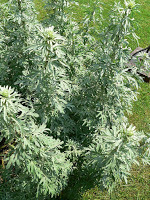
 Also known as mug wort, this herb is most commonly associated with absinthe and its hallucinogenic/hypnotic effects. Consumption of wormwood in liquor could result in spots of green in one’s peripheral and give them the illusion they were seeing ‘green fairies’. Absinthe has a strong black licorice flavor, which means I’ll take people’s word on that whole green fairy thing, but won’t be drinking enough to see it myself. Blech.
Also known as mug wort, this herb is most commonly associated with absinthe and its hallucinogenic/hypnotic effects. Consumption of wormwood in liquor could result in spots of green in one’s peripheral and give them the illusion they were seeing ‘green fairies’. Absinthe has a strong black licorice flavor, which means I’ll take people’s word on that whole green fairy thing, but won’t be drinking enough to see it myself. Blech.
Wormwood was used in beers and wines in history and was also used to repel fleas (I guess they don’t like black licorice either). It’s actually still used today not only in assisting in the treatment of malaria, but also in helping to wean off morphine addicts.
St. John’s Wort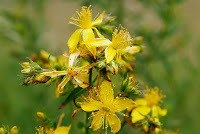
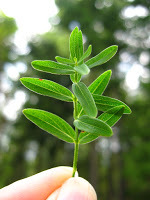 They loooooved St. John’s Wort for pretty much everything back in the day – this was due largely in part to the dots on the leaves reflecting pores on the skin (remember what I said before about them loving things that looked like body parts for those body parts?). So it was used for cleaning wounds and aiding with: gout, jaundice, kidney/liver issues, rheumatism, and warding off evil spirits. Yeah, you read that last part right. They felt the yellow flowers of the St. John’s Wort plant were effective in keeping the evil fairies at bay (of course).
They loooooved St. John’s Wort for pretty much everything back in the day – this was due largely in part to the dots on the leaves reflecting pores on the skin (remember what I said before about them loving things that looked like body parts for those body parts?). So it was used for cleaning wounds and aiding with: gout, jaundice, kidney/liver issues, rheumatism, and warding off evil spirits. Yeah, you read that last part right. They felt the yellow flowers of the St. John’s Wort plant were effective in keeping the evil fairies at bay (of course).
Studies on St. John’s Wort have actually proven the herb does aid in healing wounds (though there are others that are more effective). It was used previously to bind wounds, ward off infection and counteract the effects of a poisoned weapon (not sure how effective that last part was…) St. John’s Wort is still in use today for reducing signs of opiate withdrawal and can aid with mild cases of depression. It might even help keep evil fairies at bay still. ;)
****Note: St. John’s Wort makes your body produce less estrogen and so it speeds up your metabolism and WILL RENDER YOUR BIRTH CONTROL PILLS INEFFECTIVE. I felt like that should be in caps. You’re welcome. But birth control is not the only medicine impacted by St. John’s Wort, many others are as well. If you want to start taking ANY herbal supplement, please consult with your doctor first (and make sure your doctor has a fresh list of all the supplements you currently take, even if they don’t seem like they would be important)
Lavender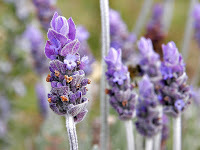 Lavender was one of those ‘good for all things’ herbs and I can’t say I blame them with how clean and wonderful lavender smells. Tinctures made of lavender were used for headaches as well as colic and indigestion (not sure how good that tasted) and could also be used for burn and insect bite relief. Also, lice hated lavender making it an ideal addition to mattress padding and rushes on the floor: good smells + no bugs = win.
Lavender was one of those ‘good for all things’ herbs and I can’t say I blame them with how clean and wonderful lavender smells. Tinctures made of lavender were used for headaches as well as colic and indigestion (not sure how good that tasted) and could also be used for burn and insect bite relief. Also, lice hated lavender making it an ideal addition to mattress padding and rushes on the floor: good smells + no bugs = win.

The scent of lavender is said to have a calming effect (and it used a lot in essential oil mixes today as a result) and can even help minimize depression and anxiety.
Valerian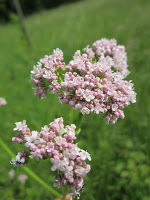 Valerian is an herb so effective as a sleep aid and anti-anxiety herb that it is still in use today. We passed around pieces of valerian root in plastic baggies for people to see/touch/smell and trust us, it was awful. It smells like manure. Yum, right?
Valerian is an herb so effective as a sleep aid and anti-anxiety herb that it is still in use today. We passed around pieces of valerian root in plastic baggies for people to see/touch/smell and trust us, it was awful. It smells like manure. Yum, right?
Don’t believe us, then know this – rats LOVE it. That’s how you know it’s nasty. LOL It’s even said the pied piper used his pipe along with valerian root to get the rats out. Kiiiiiiiinda sounds like cheating when he claimed it was only his pipe, but I’m sure with the rats gone, no one was complaining about the details.
Valerian can be poisonous if taken in too high a dose, and it is addictive.
I actually played with the idea of valerian root addiction in my upcoming novel, Highland Ruse (releasing November 14, 2017) where the hero (who is tortured and artistic and oh so hot, IMHO) suffered a traumatic event and was given valerian root to help him deal with it and develops an addiction.
Chamomile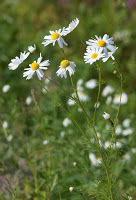 Chamomile is an herb I’m sure we’re all familiar with as it’s not uncommon to find this in relaxing teas. So, I’m sure you won’t be surprised to learn it was used for its relaxing benefits in history. However, teas are also helpful in aiding in poor digestion, fever (I’m sure motrin is better - no offense, chamomile), and to aid with insomnia.
Chamomile is an herb I’m sure we’re all familiar with as it’s not uncommon to find this in relaxing teas. So, I’m sure you won’t be surprised to learn it was used for its relaxing benefits in history. However, teas are also helpful in aiding in poor digestion, fever (I’m sure motrin is better - no offense, chamomile), and to aid with insomnia.

It’s also mentioned this was great for helping infants who are teething. One lady in the class suggested freezing the tea (it’s caffeine free – just an FYI) and putting it in a teething net for the infant to gum on. Genius! Of course I find out about this after I’m done with having teething age babies LOL (for those of you considering this, please do ask your doctor first just in case) J
Calendula Calendula, otherwise known as marigolds, was more than the poor man’s saffron – though it was used as a food dye for herbs and in place of saffron – was also used as a tea for treating tummy problems and in a salve for treating many skin injuries.
Calendula, otherwise known as marigolds, was more than the poor man’s saffron – though it was used as a food dye for herbs and in place of saffron – was also used as a tea for treating tummy problems and in a salve for treating many skin injuries.
It’s surprisingly effective in aiding with scrapes, stings, but bites, burns and can even help with bruising and reduce inflammation. I do have a fun recipe for a healing balm with calendula oil you can infuse yourself. And if I can do it, anyone can do it. Trust me – I’m a walking Pinterest Fail. LOL Eliza also has a great recipe she uses for her dogs for their little foot pads so they can play in the snow longer--which will be posted in our November newsletters! So be sure to subscribe!
Meadowsweet Meadowsweet has a pleasant scent to it, which made it a popular herb to strew in the rushes of homes during the medieval days. But it was more than just a sweet smelling plant. This pretty herb was great at helping cure headaches. It was so effective, the root is still used today in making aspirin. I’m sure it will surprise no aspirin user that overuse of meadowsweet can result in an upset tummy. Even simply chewing some of the peeled root can help your headache go away (though I’m sure popping an aspirin would taste way better).
Meadowsweet has a pleasant scent to it, which made it a popular herb to strew in the rushes of homes during the medieval days. But it was more than just a sweet smelling plant. This pretty herb was great at helping cure headaches. It was so effective, the root is still used today in making aspirin. I’m sure it will surprise no aspirin user that overuse of meadowsweet can result in an upset tummy. Even simply chewing some of the peeled root can help your headache go away (though I’m sure popping an aspirin would taste way better).

Subscribe to our newsletters for another awesome recipe! Mid-October, we sent out the healing balm recipe (which was also posted here), and in mid-November, we will sent out a pet paw ointment recipe for the coming winter!
Madeline: http://eepurl.com/biji1jEliza: http://eepurl.com/CSFFD
 Eliza Knight & Madeline Martin at the Historical Romance Retreat
Eliza Knight & Madeline Martin at the Historical Romance Retreat
ABOUT MADELINE MARTIN:
Madeline Martin is a USA TODAY Bestselling author of Scottish set historical romance novels. She lives a glitter-filled life in Jacksonville, Florida with her two daughters (known collectively as the minions) and a man so wonderful he's been dubbed Mr. Awesome. All shenanigans are detailed regularly on Twitter and on Facebook.
Madeline loves animals in sweaters, cat videos, wine and Nutella. Check out her FB page on any given Friday to see what great new book she's giving away by one of her fellow authors.
She also loves connecting with her readers, so feel free to follow her on any one of her social media platforms, or send her a message :)
FB page: https://www.facebook.com/MadelineMart... @MadelineMMartin
ABOUT ELIZA KNIGHT:
Eliza Knight is an award-winning and USA Today bestselling indie author of over fifty sizzling historical romance and erotic romance. Under the name E. Knight, she pens rip-your-heart-out historical fiction. While not reading, writing or researching for her latest book, she chases after her three children. In her spare time (if there is such a thing…) she likes daydreaming, wine-tasting, traveling, hiking, staring at the stars, watching movies, shopping and visiting with family and friends. She lives atop a small mountain with her own knight in shining armor, three princesses and two very naughty puppies.
Website: www.elizaknight.comBlog: www.historyundressed.comFacebook: www.facebook.com/elizaknightfictionTwitter: @ElizaKnightInstagram: @ElizaKnightFiction

Please note several things: We aren’t doctors, we aren’t even healers. Pretty much, we’re authors who make stuff up for a living and enjoy researching historical tidbits to share (especially the crazy ones). Do not try any of these herbs without consulting a doctor first.Yes, there is WAY more information about all the herbs we’re going to mention, and there are WAY more herbs than we list. However, it was an hour long class, and there really are only so many appropriate memes.We focused mainly on herbs we had on hand to do a fun show-and-tell with. Obviously being online you can’t see, touch, or smell these herbs. For that, we are humbly sorry (except we really feel we are owed a huge thanks on your part regarding the valerian root – just saying)A brief intro about ourselves if you missed it in Part One...
This is the voice of Eliza Knight (yes, I totally just did that with my hands cupped around my mouth, because I’m a dork like that). I have always been fascinated by healing herbs and ways to heal the body naturally. It’s amazing how many things we did back in the day, that we still do now (and also a lot we figured out were a bad idea!) Because that is a part of my “real life,” I have added it to many of my books. Several of my heroines are able to use healing herbs to help people, and some use them as poisons. My favorite two herbal heroines are Shona from HIGHLANDER’S TOUCH and Julianna from THE HIGHLAND WARRIOR’S BRIDE. Shona is a healer, and is often called to the castle and village to help people, but she has also been nicknamed the Witch of the Wood, since people were so suspicious of women who could heal with herbs. Julianna, uses her herbal knowledge for good & bad. She’s a warrior, and uses poisons on her weapons.
So, for Madeline Martin (yeah, I totally just referred to myself in third person to keep this from getting confusing) – I decided I would write a female healer as they’ve always fascinated me. Celia (from Enchantment of a Highlander) was not only a healer, but a survivor of the North Berwick Witch Trials (it’s sad and fascinating and the history dork in me demands you look it up). In order to write a healer though, I wanted to have the full experience of what she might go through, so I decided to start doing all natural bath and body products. It opened the door to this incredible interest and now all you nice folks will be subjected to our findings. J
Now, onto the herbs!Wormwood

 Also known as mug wort, this herb is most commonly associated with absinthe and its hallucinogenic/hypnotic effects. Consumption of wormwood in liquor could result in spots of green in one’s peripheral and give them the illusion they were seeing ‘green fairies’. Absinthe has a strong black licorice flavor, which means I’ll take people’s word on that whole green fairy thing, but won’t be drinking enough to see it myself. Blech.
Also known as mug wort, this herb is most commonly associated with absinthe and its hallucinogenic/hypnotic effects. Consumption of wormwood in liquor could result in spots of green in one’s peripheral and give them the illusion they were seeing ‘green fairies’. Absinthe has a strong black licorice flavor, which means I’ll take people’s word on that whole green fairy thing, but won’t be drinking enough to see it myself. Blech. Wormwood was used in beers and wines in history and was also used to repel fleas (I guess they don’t like black licorice either). It’s actually still used today not only in assisting in the treatment of malaria, but also in helping to wean off morphine addicts.
St. John’s Wort

 They loooooved St. John’s Wort for pretty much everything back in the day – this was due largely in part to the dots on the leaves reflecting pores on the skin (remember what I said before about them loving things that looked like body parts for those body parts?). So it was used for cleaning wounds and aiding with: gout, jaundice, kidney/liver issues, rheumatism, and warding off evil spirits. Yeah, you read that last part right. They felt the yellow flowers of the St. John’s Wort plant were effective in keeping the evil fairies at bay (of course).
They loooooved St. John’s Wort for pretty much everything back in the day – this was due largely in part to the dots on the leaves reflecting pores on the skin (remember what I said before about them loving things that looked like body parts for those body parts?). So it was used for cleaning wounds and aiding with: gout, jaundice, kidney/liver issues, rheumatism, and warding off evil spirits. Yeah, you read that last part right. They felt the yellow flowers of the St. John’s Wort plant were effective in keeping the evil fairies at bay (of course).Studies on St. John’s Wort have actually proven the herb does aid in healing wounds (though there are others that are more effective). It was used previously to bind wounds, ward off infection and counteract the effects of a poisoned weapon (not sure how effective that last part was…) St. John’s Wort is still in use today for reducing signs of opiate withdrawal and can aid with mild cases of depression. It might even help keep evil fairies at bay still. ;)
****Note: St. John’s Wort makes your body produce less estrogen and so it speeds up your metabolism and WILL RENDER YOUR BIRTH CONTROL PILLS INEFFECTIVE. I felt like that should be in caps. You’re welcome. But birth control is not the only medicine impacted by St. John’s Wort, many others are as well. If you want to start taking ANY herbal supplement, please consult with your doctor first (and make sure your doctor has a fresh list of all the supplements you currently take, even if they don’t seem like they would be important)
Lavender
 Lavender was one of those ‘good for all things’ herbs and I can’t say I blame them with how clean and wonderful lavender smells. Tinctures made of lavender were used for headaches as well as colic and indigestion (not sure how good that tasted) and could also be used for burn and insect bite relief. Also, lice hated lavender making it an ideal addition to mattress padding and rushes on the floor: good smells + no bugs = win.
Lavender was one of those ‘good for all things’ herbs and I can’t say I blame them with how clean and wonderful lavender smells. Tinctures made of lavender were used for headaches as well as colic and indigestion (not sure how good that tasted) and could also be used for burn and insect bite relief. Also, lice hated lavender making it an ideal addition to mattress padding and rushes on the floor: good smells + no bugs = win.

The scent of lavender is said to have a calming effect (and it used a lot in essential oil mixes today as a result) and can even help minimize depression and anxiety.
Valerian
 Valerian is an herb so effective as a sleep aid and anti-anxiety herb that it is still in use today. We passed around pieces of valerian root in plastic baggies for people to see/touch/smell and trust us, it was awful. It smells like manure. Yum, right?
Valerian is an herb so effective as a sleep aid and anti-anxiety herb that it is still in use today. We passed around pieces of valerian root in plastic baggies for people to see/touch/smell and trust us, it was awful. It smells like manure. Yum, right?Don’t believe us, then know this – rats LOVE it. That’s how you know it’s nasty. LOL It’s even said the pied piper used his pipe along with valerian root to get the rats out. Kiiiiiiiinda sounds like cheating when he claimed it was only his pipe, but I’m sure with the rats gone, no one was complaining about the details.
Valerian can be poisonous if taken in too high a dose, and it is addictive.
I actually played with the idea of valerian root addiction in my upcoming novel, Highland Ruse (releasing November 14, 2017) where the hero (who is tortured and artistic and oh so hot, IMHO) suffered a traumatic event and was given valerian root to help him deal with it and develops an addiction.
Chamomile
 Chamomile is an herb I’m sure we’re all familiar with as it’s not uncommon to find this in relaxing teas. So, I’m sure you won’t be surprised to learn it was used for its relaxing benefits in history. However, teas are also helpful in aiding in poor digestion, fever (I’m sure motrin is better - no offense, chamomile), and to aid with insomnia.
Chamomile is an herb I’m sure we’re all familiar with as it’s not uncommon to find this in relaxing teas. So, I’m sure you won’t be surprised to learn it was used for its relaxing benefits in history. However, teas are also helpful in aiding in poor digestion, fever (I’m sure motrin is better - no offense, chamomile), and to aid with insomnia.

It’s also mentioned this was great for helping infants who are teething. One lady in the class suggested freezing the tea (it’s caffeine free – just an FYI) and putting it in a teething net for the infant to gum on. Genius! Of course I find out about this after I’m done with having teething age babies LOL (for those of you considering this, please do ask your doctor first just in case) J
Calendula
 Calendula, otherwise known as marigolds, was more than the poor man’s saffron – though it was used as a food dye for herbs and in place of saffron – was also used as a tea for treating tummy problems and in a salve for treating many skin injuries.
Calendula, otherwise known as marigolds, was more than the poor man’s saffron – though it was used as a food dye for herbs and in place of saffron – was also used as a tea for treating tummy problems and in a salve for treating many skin injuries.It’s surprisingly effective in aiding with scrapes, stings, but bites, burns and can even help with bruising and reduce inflammation. I do have a fun recipe for a healing balm with calendula oil you can infuse yourself. And if I can do it, anyone can do it. Trust me – I’m a walking Pinterest Fail. LOL Eliza also has a great recipe she uses for her dogs for their little foot pads so they can play in the snow longer--which will be posted in our November newsletters! So be sure to subscribe!
Meadowsweet
 Meadowsweet has a pleasant scent to it, which made it a popular herb to strew in the rushes of homes during the medieval days. But it was more than just a sweet smelling plant. This pretty herb was great at helping cure headaches. It was so effective, the root is still used today in making aspirin. I’m sure it will surprise no aspirin user that overuse of meadowsweet can result in an upset tummy. Even simply chewing some of the peeled root can help your headache go away (though I’m sure popping an aspirin would taste way better).
Meadowsweet has a pleasant scent to it, which made it a popular herb to strew in the rushes of homes during the medieval days. But it was more than just a sweet smelling plant. This pretty herb was great at helping cure headaches. It was so effective, the root is still used today in making aspirin. I’m sure it will surprise no aspirin user that overuse of meadowsweet can result in an upset tummy. Even simply chewing some of the peeled root can help your headache go away (though I’m sure popping an aspirin would taste way better).
Subscribe to our newsletters for another awesome recipe! Mid-October, we sent out the healing balm recipe (which was also posted here), and in mid-November, we will sent out a pet paw ointment recipe for the coming winter!
Madeline: http://eepurl.com/biji1jEliza: http://eepurl.com/CSFFD
 Eliza Knight & Madeline Martin at the Historical Romance Retreat
Eliza Knight & Madeline Martin at the Historical Romance Retreat ABOUT MADELINE MARTIN:
Madeline Martin is a USA TODAY Bestselling author of Scottish set historical romance novels. She lives a glitter-filled life in Jacksonville, Florida with her two daughters (known collectively as the minions) and a man so wonderful he's been dubbed Mr. Awesome. All shenanigans are detailed regularly on Twitter and on Facebook.
Madeline loves animals in sweaters, cat videos, wine and Nutella. Check out her FB page on any given Friday to see what great new book she's giving away by one of her fellow authors.
She also loves connecting with her readers, so feel free to follow her on any one of her social media platforms, or send her a message :)
FB page: https://www.facebook.com/MadelineMart... @MadelineMMartin
ABOUT ELIZA KNIGHT:
Eliza Knight is an award-winning and USA Today bestselling indie author of over fifty sizzling historical romance and erotic romance. Under the name E. Knight, she pens rip-your-heart-out historical fiction. While not reading, writing or researching for her latest book, she chases after her three children. In her spare time (if there is such a thing…) she likes daydreaming, wine-tasting, traveling, hiking, staring at the stars, watching movies, shopping and visiting with family and friends. She lives atop a small mountain with her own knight in shining armor, three princesses and two very naughty puppies.
Website: www.elizaknight.comBlog: www.historyundressed.comFacebook: www.facebook.com/elizaknightfictionTwitter: @ElizaKnightInstagram: @ElizaKnightFiction
Published on October 18, 2017 04:55
October 11, 2017
Part One: History of Medicinal Herbs
Part One: History of Medicinal Herbsby Madeline Martin and Eliza Knight
Hi, everyone! Madeline Martin and Eliza Knight here! We’re sorry you weren’t able to attend our History of Medicinal Herbs class at the Historical Romance Retreat in Spokane, WA this year. There was so much interest in this class that we wanted to do a blog post here so everyone can enjoy. But there is so much to share, we’ve decided to break it down into four fun parts! Check back weekly!

Please note several things: We aren’t doctors, we aren’t even healers. Pretty much, we’re authors who make stuff up for a living and enjoy researching historical tidbits to share (especially the crazy ones). Do not try any of these herbs without consulting a doctor first.Yes, there is WAY more information about all the herbs we’re going to mention, and there are WAY more herbs than we list. However, it was an hour long class, and there really are only so many appropriate memes.We focused mainly on herbs we had on hand to do a fun show-and-tell with. Obviously being online you can’t see, touch, or smell these herbs. For that, we are humbly sorry (except we really feel we are owed a huge thanks on your part regarding the valerian root – just saying)
This is the voice of Eliza Knight (yes, I totally just did that with my hands cupped around my mouth, because I’m a dork like that). I have always been fascinated by healing herbs and ways to heal the body naturally. It’s amazing how many things we did back in the day, that we still do now (and also a lot we figured out were a bad idea!) Because that is a part of my “real life,” I have added it to many of my books. Several of my heroines are able to use healing herbs to help people, and some use them as poisons. My favorite two herbal heroines are Shona from HIGHLANDER’S TOUCH and Julianna from THE HIGHLAND WARRIOR’S BRIDE. Shona is a healer, and is often called to the castle and village to help people, but she has also been nicknamed the Witch of the Wood, since people were so suspicious of women who could heal with herbs. Julianna, uses her herbal knowledge for good & bad. She’s a warrior, and uses poisons on her weapons.
So, for Madeline Martin (yeah, I totally just referred to myself in third person to keep this from getting confusing) – I decided I would write a female healer as they’ve always fascinated me. Celia (from Enchantment of a Highlander) was not only a healer, but a survivor of the North Berwick Witch Trials (it’s sad and fascinating and the history dork in me demands you look it up). In order to write a healer though, I wanted to have the full experience of what she might go through, so I decided to start doing all natural bath and body products. It opened the door to this incredible interest and now all you nice folks will be subjected to our findings. J
We can’t get into historical medicine and NOT talk about the crazy things they did/believed back then. Here are just a few (feel free to share more in the comments – no one can ever have enough conversational fodder with these kinds of things!)

Mercury was used for everything. They rubbed on scrapes, drank it for good health, and even certain parts of the skin were soaked in it. For those of you who might not know, mercury is super poisonous and would eventually kill you. Bonus, it DID help reduce the spread STDs. Silver lining (hahaha pun intended)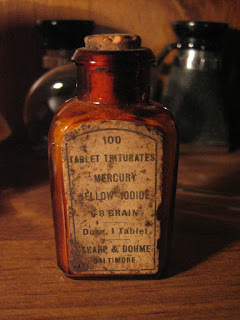 Trepanning was the act of intentionally putting a hole in someone’s head. Yeah, intentionally. This was meant to relieve intense migraines and also cure people who were suffering from demon possession (this was oftentimes epilepsy, but the doctors weren’t on the up and up then, so….yeah). It often wasn’t the hole in the head who would kill their victims, but the fractured skull which oftentimes resulted in the creation of the hole, or the infections that happened as a result of poorly washed utensils. (we need another history mess up, like we need a solid trepanning, yet on we press!)
Trepanning was the act of intentionally putting a hole in someone’s head. Yeah, intentionally. This was meant to relieve intense migraines and also cure people who were suffering from demon possession (this was oftentimes epilepsy, but the doctors weren’t on the up and up then, so….yeah). It often wasn’t the hole in the head who would kill their victims, but the fractured skull which oftentimes resulted in the creation of the hole, or the infections that happened as a result of poorly washed utensils. (we need another history mess up, like we need a solid trepanning, yet on we press!)
 Pee was used…a LOT. Pee, especially from a pregnant woman, was bathed in, used for soaking and...yes...even drank. There is no scientific evidence this would ever have helped. However, Romans did swish with pee to whiten their teeth, and it actually has been scientifically proven to work. (I’ll still with tooth strips, thank you very much)Pills were encased with gold for the high nobles and incredibly wealthy, so any effectiveness of the pill would never even have helped. Then again, some of the cures could kill you then, so in some cases, this might have saved them from the cure.Blood letting was to balance the four humours, blood, phlegm, yellow bile, black bile as it was believe illness was an offsetting of these, and bleeding would put it all back in harmony.
Pee was used…a LOT. Pee, especially from a pregnant woman, was bathed in, used for soaking and...yes...even drank. There is no scientific evidence this would ever have helped. However, Romans did swish with pee to whiten their teeth, and it actually has been scientifically proven to work. (I’ll still with tooth strips, thank you very much)Pills were encased with gold for the high nobles and incredibly wealthy, so any effectiveness of the pill would never even have helped. Then again, some of the cures could kill you then, so in some cases, this might have saved them from the cure.Blood letting was to balance the four humours, blood, phlegm, yellow bile, black bile as it was believe illness was an offsetting of these, and bleeding would put it all back in harmony.
 Animal dung was also used…A LOT. Dung was used in poultices (I’m sure that smelled great) and on skin in balms/oils. One of the more interesting finds was how in ancient Egypt, crocodile dung smeared inside the hollowed out half of a lemon for contraception. In truth, the half a lemon would have been a great diaphragm and the citric acid would have acted as a spermicide, but I’m sure the dung was great for….abstinence? Yeast infection? I wouldn’t recommend it. It was thought that plants made to look like certain body parts were intended by nature to be used on those body parts. For example, skullcap was used for headaches since they looked like little shrunken heads with wispy hairs.Corpse medicine – yep, this was made from dead bodies. Powdered, dried, ground, etc bones/skin/hair from certain dead people (depending on how they were or how they died) were used in medicines to help with issues. The more notable the person, the more effective their dehydrated parts. Bone tea anyone?
Animal dung was also used…A LOT. Dung was used in poultices (I’m sure that smelled great) and on skin in balms/oils. One of the more interesting finds was how in ancient Egypt, crocodile dung smeared inside the hollowed out half of a lemon for contraception. In truth, the half a lemon would have been a great diaphragm and the citric acid would have acted as a spermicide, but I’m sure the dung was great for….abstinence? Yeast infection? I wouldn’t recommend it. It was thought that plants made to look like certain body parts were intended by nature to be used on those body parts. For example, skullcap was used for headaches since they looked like little shrunken heads with wispy hairs.Corpse medicine – yep, this was made from dead bodies. Powdered, dried, ground, etc bones/skin/hair from certain dead people (depending on how they were or how they died) were used in medicines to help with issues. The more notable the person, the more effective their dehydrated parts. Bone tea anyone?

Different ways herbs were used (and are actually still used today): Tincture – this was an alcoholic extraction of herbs with sometimes as high as a 90% alcohol content (though usually it was more like 25-60%). Vinegar was also used with this. It’s made to hit the bloodstream and was usually sweetened with honey to make it more palatable (especially if it was made with vinegar – YUCK!) Poultice – this was a soft, moist bag of heated herbs put in a cloth and set on the skin to to help with cuts/lacerations.Enemas – much the same as a tincture, it was inserted into the rectum. In fact, in the households of nobles and royals, there was a person whose job it was to administer enemas given their diets rich in meat and facts and little fiber.
Poultice – this was a soft, moist bag of heated herbs put in a cloth and set on the skin to to help with cuts/lacerations.Enemas – much the same as a tincture, it was inserted into the rectum. In fact, in the households of nobles and royals, there was a person whose job it was to administer enemas given their diets rich in meat and facts and little fiber.
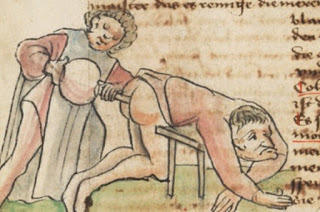 Essential oil – these were oils pulled from the plant. This came from all parts of the plans and could have different healing properties depending on what it was (leaves, flowers, roots, stems, and even seeds) and was either put in teas, breathed in, put in balms, etc. If placed directly on the skin, essential oils usually need some sort of a carrier oil as some of the stronger oils can actually burn your skin.Tea – They didn’t have tea bags back in the day, so this was a raw blend of loose leaf.
Essential oil – these were oils pulled from the plant. This came from all parts of the plans and could have different healing properties depending on what it was (leaves, flowers, roots, stems, and even seeds) and was either put in teas, breathed in, put in balms, etc. If placed directly on the skin, essential oils usually need some sort of a carrier oil as some of the stronger oils can actually burn your skin.Tea – They didn’t have tea bags back in the day, so this was a raw blend of loose leaf.
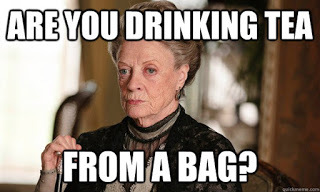 Balm/Salve – While we use beeswax for this now and other melted butters (cocoa butter, shea butter, etc) people in history would use what was available. Like lard. Yum.Pills – Considering these were encased in gold, these might have done some good for you…maybe.Eaten/Chewed – Mint leaves were chewed before meeting with some kings. It’s good to be king.
Balm/Salve – While we use beeswax for this now and other melted butters (cocoa butter, shea butter, etc) people in history would use what was available. Like lard. Yum.Pills – Considering these were encased in gold, these might have done some good for you…maybe.Eaten/Chewed – Mint leaves were chewed before meeting with some kings. It’s good to be king.
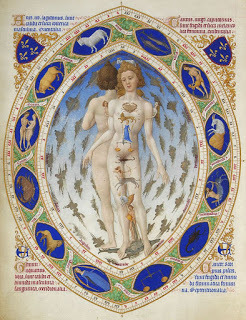
Subscribe to our newsletters for two awesome recipes! Mid-October, we will send out the healing balm recipe, and in mid-November, we will sent out a pet paw ointment recipe for the coming winter!
Madeline: http://eepurl.com/biji1jEliza: http://eepurl.com/CSFFD
 Eliza Knight & Madeline Martin at the Historical Romance Retreat
Eliza Knight & Madeline Martin at the Historical Romance Retreat
ABOUT MADELINE MARTIN:
Madeline Martin is a USA TODAY Bestselling author of Scottish set historical romance novels. She lives a glitter-filled life in Jacksonville, Florida with her two daughters (known collectively as the minions) and a man so wonderful he's been dubbed Mr. Awesome. All shenanigans are detailed regularly on Twitter and on Facebook.
Madeline loves animals in sweaters, cat videos, wine and Nutella. Check out her FB page on any given Friday to see what great new book she's giving away by one of her fellow authors.
She also loves connecting with her readers, so feel free to follow her on any one of her social media platforms, or send her a message :)
FB page: https://www.facebook.com/MadelineMart... @MadelineMMartin
ABOUT ELIZA KNIGHT:
Eliza Knight is an award-winning and USA Today bestselling indie author of over fifty sizzling historical romance and erotic romance. Under the name E. Knight, she pens rip-your-heart-out historical fiction. While not reading, writing or researching for her latest book, she chases after her three children. In her spare time (if there is such a thing…) she likes daydreaming, wine-tasting, traveling, hiking, staring at the stars, watching movies, shopping and visiting with family and friends. She lives atop a small mountain with her own knight in shining armor, three princesses and two very naughty puppies.
Website: www.elizaknight.comBlog: www.historyundressed.comFacebook: www.facebook.com/elizaknightfictionTwitter: @ElizaKnightInstagram: @ElizaKnightFiction
Hi, everyone! Madeline Martin and Eliza Knight here! We’re sorry you weren’t able to attend our History of Medicinal Herbs class at the Historical Romance Retreat in Spokane, WA this year. There was so much interest in this class that we wanted to do a blog post here so everyone can enjoy. But there is so much to share, we’ve decided to break it down into four fun parts! Check back weekly!

Please note several things: We aren’t doctors, we aren’t even healers. Pretty much, we’re authors who make stuff up for a living and enjoy researching historical tidbits to share (especially the crazy ones). Do not try any of these herbs without consulting a doctor first.Yes, there is WAY more information about all the herbs we’re going to mention, and there are WAY more herbs than we list. However, it was an hour long class, and there really are only so many appropriate memes.We focused mainly on herbs we had on hand to do a fun show-and-tell with. Obviously being online you can’t see, touch, or smell these herbs. For that, we are humbly sorry (except we really feel we are owed a huge thanks on your part regarding the valerian root – just saying)
This is the voice of Eliza Knight (yes, I totally just did that with my hands cupped around my mouth, because I’m a dork like that). I have always been fascinated by healing herbs and ways to heal the body naturally. It’s amazing how many things we did back in the day, that we still do now (and also a lot we figured out were a bad idea!) Because that is a part of my “real life,” I have added it to many of my books. Several of my heroines are able to use healing herbs to help people, and some use them as poisons. My favorite two herbal heroines are Shona from HIGHLANDER’S TOUCH and Julianna from THE HIGHLAND WARRIOR’S BRIDE. Shona is a healer, and is often called to the castle and village to help people, but she has also been nicknamed the Witch of the Wood, since people were so suspicious of women who could heal with herbs. Julianna, uses her herbal knowledge for good & bad. She’s a warrior, and uses poisons on her weapons.
So, for Madeline Martin (yeah, I totally just referred to myself in third person to keep this from getting confusing) – I decided I would write a female healer as they’ve always fascinated me. Celia (from Enchantment of a Highlander) was not only a healer, but a survivor of the North Berwick Witch Trials (it’s sad and fascinating and the history dork in me demands you look it up). In order to write a healer though, I wanted to have the full experience of what she might go through, so I decided to start doing all natural bath and body products. It opened the door to this incredible interest and now all you nice folks will be subjected to our findings. J
We can’t get into historical medicine and NOT talk about the crazy things they did/believed back then. Here are just a few (feel free to share more in the comments – no one can ever have enough conversational fodder with these kinds of things!)

Mercury was used for everything. They rubbed on scrapes, drank it for good health, and even certain parts of the skin were soaked in it. For those of you who might not know, mercury is super poisonous and would eventually kill you. Bonus, it DID help reduce the spread STDs. Silver lining (hahaha pun intended)
 Trepanning was the act of intentionally putting a hole in someone’s head. Yeah, intentionally. This was meant to relieve intense migraines and also cure people who were suffering from demon possession (this was oftentimes epilepsy, but the doctors weren’t on the up and up then, so….yeah). It often wasn’t the hole in the head who would kill their victims, but the fractured skull which oftentimes resulted in the creation of the hole, or the infections that happened as a result of poorly washed utensils. (we need another history mess up, like we need a solid trepanning, yet on we press!)
Trepanning was the act of intentionally putting a hole in someone’s head. Yeah, intentionally. This was meant to relieve intense migraines and also cure people who were suffering from demon possession (this was oftentimes epilepsy, but the doctors weren’t on the up and up then, so….yeah). It often wasn’t the hole in the head who would kill their victims, but the fractured skull which oftentimes resulted in the creation of the hole, or the infections that happened as a result of poorly washed utensils. (we need another history mess up, like we need a solid trepanning, yet on we press!)
 Pee was used…a LOT. Pee, especially from a pregnant woman, was bathed in, used for soaking and...yes...even drank. There is no scientific evidence this would ever have helped. However, Romans did swish with pee to whiten their teeth, and it actually has been scientifically proven to work. (I’ll still with tooth strips, thank you very much)Pills were encased with gold for the high nobles and incredibly wealthy, so any effectiveness of the pill would never even have helped. Then again, some of the cures could kill you then, so in some cases, this might have saved them from the cure.Blood letting was to balance the four humours, blood, phlegm, yellow bile, black bile as it was believe illness was an offsetting of these, and bleeding would put it all back in harmony.
Pee was used…a LOT. Pee, especially from a pregnant woman, was bathed in, used for soaking and...yes...even drank. There is no scientific evidence this would ever have helped. However, Romans did swish with pee to whiten their teeth, and it actually has been scientifically proven to work. (I’ll still with tooth strips, thank you very much)Pills were encased with gold for the high nobles and incredibly wealthy, so any effectiveness of the pill would never even have helped. Then again, some of the cures could kill you then, so in some cases, this might have saved them from the cure.Blood letting was to balance the four humours, blood, phlegm, yellow bile, black bile as it was believe illness was an offsetting of these, and bleeding would put it all back in harmony.
 Animal dung was also used…A LOT. Dung was used in poultices (I’m sure that smelled great) and on skin in balms/oils. One of the more interesting finds was how in ancient Egypt, crocodile dung smeared inside the hollowed out half of a lemon for contraception. In truth, the half a lemon would have been a great diaphragm and the citric acid would have acted as a spermicide, but I’m sure the dung was great for….abstinence? Yeast infection? I wouldn’t recommend it. It was thought that plants made to look like certain body parts were intended by nature to be used on those body parts. For example, skullcap was used for headaches since they looked like little shrunken heads with wispy hairs.Corpse medicine – yep, this was made from dead bodies. Powdered, dried, ground, etc bones/skin/hair from certain dead people (depending on how they were or how they died) were used in medicines to help with issues. The more notable the person, the more effective their dehydrated parts. Bone tea anyone?
Animal dung was also used…A LOT. Dung was used in poultices (I’m sure that smelled great) and on skin in balms/oils. One of the more interesting finds was how in ancient Egypt, crocodile dung smeared inside the hollowed out half of a lemon for contraception. In truth, the half a lemon would have been a great diaphragm and the citric acid would have acted as a spermicide, but I’m sure the dung was great for….abstinence? Yeast infection? I wouldn’t recommend it. It was thought that plants made to look like certain body parts were intended by nature to be used on those body parts. For example, skullcap was used for headaches since they looked like little shrunken heads with wispy hairs.Corpse medicine – yep, this was made from dead bodies. Powdered, dried, ground, etc bones/skin/hair from certain dead people (depending on how they were or how they died) were used in medicines to help with issues. The more notable the person, the more effective their dehydrated parts. Bone tea anyone?
Different ways herbs were used (and are actually still used today): Tincture – this was an alcoholic extraction of herbs with sometimes as high as a 90% alcohol content (though usually it was more like 25-60%). Vinegar was also used with this. It’s made to hit the bloodstream and was usually sweetened with honey to make it more palatable (especially if it was made with vinegar – YUCK!)
 Poultice – this was a soft, moist bag of heated herbs put in a cloth and set on the skin to to help with cuts/lacerations.Enemas – much the same as a tincture, it was inserted into the rectum. In fact, in the households of nobles and royals, there was a person whose job it was to administer enemas given their diets rich in meat and facts and little fiber.
Poultice – this was a soft, moist bag of heated herbs put in a cloth and set on the skin to to help with cuts/lacerations.Enemas – much the same as a tincture, it was inserted into the rectum. In fact, in the households of nobles and royals, there was a person whose job it was to administer enemas given their diets rich in meat and facts and little fiber.
 Essential oil – these were oils pulled from the plant. This came from all parts of the plans and could have different healing properties depending on what it was (leaves, flowers, roots, stems, and even seeds) and was either put in teas, breathed in, put in balms, etc. If placed directly on the skin, essential oils usually need some sort of a carrier oil as some of the stronger oils can actually burn your skin.Tea – They didn’t have tea bags back in the day, so this was a raw blend of loose leaf.
Essential oil – these were oils pulled from the plant. This came from all parts of the plans and could have different healing properties depending on what it was (leaves, flowers, roots, stems, and even seeds) and was either put in teas, breathed in, put in balms, etc. If placed directly on the skin, essential oils usually need some sort of a carrier oil as some of the stronger oils can actually burn your skin.Tea – They didn’t have tea bags back in the day, so this was a raw blend of loose leaf.
 Balm/Salve – While we use beeswax for this now and other melted butters (cocoa butter, shea butter, etc) people in history would use what was available. Like lard. Yum.Pills – Considering these were encased in gold, these might have done some good for you…maybe.Eaten/Chewed – Mint leaves were chewed before meeting with some kings. It’s good to be king.
Balm/Salve – While we use beeswax for this now and other melted butters (cocoa butter, shea butter, etc) people in history would use what was available. Like lard. Yum.Pills – Considering these were encased in gold, these might have done some good for you…maybe.Eaten/Chewed – Mint leaves were chewed before meeting with some kings. It’s good to be king. 
Subscribe to our newsletters for two awesome recipes! Mid-October, we will send out the healing balm recipe, and in mid-November, we will sent out a pet paw ointment recipe for the coming winter!
Madeline: http://eepurl.com/biji1jEliza: http://eepurl.com/CSFFD
 Eliza Knight & Madeline Martin at the Historical Romance Retreat
Eliza Knight & Madeline Martin at the Historical Romance Retreat ABOUT MADELINE MARTIN:
Madeline Martin is a USA TODAY Bestselling author of Scottish set historical romance novels. She lives a glitter-filled life in Jacksonville, Florida with her two daughters (known collectively as the minions) and a man so wonderful he's been dubbed Mr. Awesome. All shenanigans are detailed regularly on Twitter and on Facebook.
Madeline loves animals in sweaters, cat videos, wine and Nutella. Check out her FB page on any given Friday to see what great new book she's giving away by one of her fellow authors.
She also loves connecting with her readers, so feel free to follow her on any one of her social media platforms, or send her a message :)
FB page: https://www.facebook.com/MadelineMart... @MadelineMMartin
ABOUT ELIZA KNIGHT:
Eliza Knight is an award-winning and USA Today bestselling indie author of over fifty sizzling historical romance and erotic romance. Under the name E. Knight, she pens rip-your-heart-out historical fiction. While not reading, writing or researching for her latest book, she chases after her three children. In her spare time (if there is such a thing…) she likes daydreaming, wine-tasting, traveling, hiking, staring at the stars, watching movies, shopping and visiting with family and friends. She lives atop a small mountain with her own knight in shining armor, three princesses and two very naughty puppies.
Website: www.elizaknight.comBlog: www.historyundressed.comFacebook: www.facebook.com/elizaknightfictionTwitter: @ElizaKnightInstagram: @ElizaKnightFiction
Published on October 11, 2017 00:00
October 10, 2017
St. Elmo's Fire - Phenomenon at Sea
Everything is in flames, the sky with lightning, the water with luminous particles, and even the very masts are pointed with a blue flame.— Charles Darwin, 1832
 What Charles Darwin witnessed was St. Elmo’s Fire. But what is it? And why did sailors, who are generally superstitious, believe it was a good omen?
What Charles Darwin witnessed was St. Elmo’s Fire. But what is it? And why did sailors, who are generally superstitious, believe it was a good omen?
St. Elmo’s fire is a meteorological phenomenon that happens when there is a strong electrical field in the air, like during thunderstorms or volcanic eruptions. It is plasma, or ionized air, that sparks off pointed objects, sharp corners, or metal edges, and emits a blue or purplish glow. Scientifically, it is a corona discharge. As defined by Wikipedia, the discharge occurs “when one of two conducting surfaces (such as electrodes) of differing voltages has a pointed shape, resulting in a highly concentrated electric field at its tip that ionizes the air (or other gas) around it”.
 How did St. Elmo’s fire get its name? It’s named after the patron saint of sailors, St. Erasmus, a bishop in Formia, Italy. During the persecution of Christians, legends say he was captured, imprisoned, tortured, miraculously healed, and escaped, several times over. Despite the dangers and threat of certain death, Erasmus continued to preach, convert pagans to Christianity, and conduct baptisms. He met with a grizzly end (and martyrdom) after being captured again in the Roman province of Illyria. His abdomen had been slit open, his intestines were pulled from his body, and slowly wound around a windlass—the winch-like device used for raising a ship’s anchor.
How did St. Elmo’s fire get its name? It’s named after the patron saint of sailors, St. Erasmus, a bishop in Formia, Italy. During the persecution of Christians, legends say he was captured, imprisoned, tortured, miraculously healed, and escaped, several times over. Despite the dangers and threat of certain death, Erasmus continued to preach, convert pagans to Christianity, and conduct baptisms. He met with a grizzly end (and martyrdom) after being captured again in the Roman province of Illyria. His abdomen had been slit open, his intestines were pulled from his body, and slowly wound around a windlass—the winch-like device used for raising a ship’s anchor.
Another legend states that the Christian martyr once continued to preach after a lightning bolt struck the ground beside him. This lead to sailors believing that St. Elmo was appearing to them during storms. The phenomenon often happens near the end of a storm and was considered a good sign calmer weather was ahead. And thus why sailors weren’t frightened of the blue flames or glowing balls around the masts and yardarms. The saint was present, he’d protect them.
St. Elmos’ fire isn’t just a nautical weather event. The electrical discharge can be seen most anywhere there is a pointed object. Think steeples, radio towers, leading edges of aircraft, even on the horns of cattle. Crazy!
Here is a video that helps to understand how it works and what it looks like.
https://youtu.be/0KhDzzCiEWc
About the Author Jennifer is the award-winning author of the Romancing the Pirate series. Visit her at www.jbrayweber.com or join her mailing list for sneak peeks, excerpts, and giveaways.
 What Charles Darwin witnessed was St. Elmo’s Fire. But what is it? And why did sailors, who are generally superstitious, believe it was a good omen?
What Charles Darwin witnessed was St. Elmo’s Fire. But what is it? And why did sailors, who are generally superstitious, believe it was a good omen? St. Elmo’s fire is a meteorological phenomenon that happens when there is a strong electrical field in the air, like during thunderstorms or volcanic eruptions. It is plasma, or ionized air, that sparks off pointed objects, sharp corners, or metal edges, and emits a blue or purplish glow. Scientifically, it is a corona discharge. As defined by Wikipedia, the discharge occurs “when one of two conducting surfaces (such as electrodes) of differing voltages has a pointed shape, resulting in a highly concentrated electric field at its tip that ionizes the air (or other gas) around it”.
 How did St. Elmo’s fire get its name? It’s named after the patron saint of sailors, St. Erasmus, a bishop in Formia, Italy. During the persecution of Christians, legends say he was captured, imprisoned, tortured, miraculously healed, and escaped, several times over. Despite the dangers and threat of certain death, Erasmus continued to preach, convert pagans to Christianity, and conduct baptisms. He met with a grizzly end (and martyrdom) after being captured again in the Roman province of Illyria. His abdomen had been slit open, his intestines were pulled from his body, and slowly wound around a windlass—the winch-like device used for raising a ship’s anchor.
How did St. Elmo’s fire get its name? It’s named after the patron saint of sailors, St. Erasmus, a bishop in Formia, Italy. During the persecution of Christians, legends say he was captured, imprisoned, tortured, miraculously healed, and escaped, several times over. Despite the dangers and threat of certain death, Erasmus continued to preach, convert pagans to Christianity, and conduct baptisms. He met with a grizzly end (and martyrdom) after being captured again in the Roman province of Illyria. His abdomen had been slit open, his intestines were pulled from his body, and slowly wound around a windlass—the winch-like device used for raising a ship’s anchor.Another legend states that the Christian martyr once continued to preach after a lightning bolt struck the ground beside him. This lead to sailors believing that St. Elmo was appearing to them during storms. The phenomenon often happens near the end of a storm and was considered a good sign calmer weather was ahead. And thus why sailors weren’t frightened of the blue flames or glowing balls around the masts and yardarms. The saint was present, he’d protect them.
St. Elmos’ fire isn’t just a nautical weather event. The electrical discharge can be seen most anywhere there is a pointed object. Think steeples, radio towers, leading edges of aircraft, even on the horns of cattle. Crazy!
Here is a video that helps to understand how it works and what it looks like.
https://youtu.be/0KhDzzCiEWc
About the Author Jennifer is the award-winning author of the Romancing the Pirate series. Visit her at www.jbrayweber.com or join her mailing list for sneak peeks, excerpts, and giveaways.
Published on October 10, 2017 01:30
September 21, 2017
Ghostly Castles and Tales by Madeline Martin
Ghostly Castles and Talesby Madeline Martin

Europe has no shortage of ancient castles and dwellings, and where there are ancient settings, there are ghosts.
I think one of the things that fascinates me so much about ghost stories is the full on romanticism behind them. Most are driven by and explosion of passion, propelled by love or hate or sheer envy. The stories behind them are rife with drama and intrigue and desire.
In researching ghost stories for this book to decide where to set it, I found a couple of interesting facts to share with people.
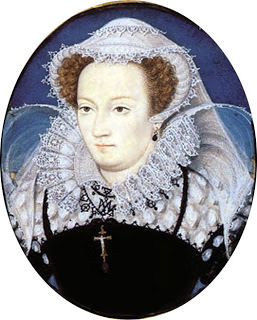
First of all, is that Queen Mary of Scots has several ghost stories. She’s reported to haunt Borthwick Castle dressed as a page boy (the way she’d managed her escape in life once before). She’s also reported to haunt Stirling Castle as the pink lady. A hotel in Oundlel in Northhamptonshire, England also claims she haunts their halls where the staircase from Forthinghay Castle had been transported and incorporated into the building. Have you heard of other stories where Queen Mary of Scots has done some haunting?

Secondly, are all the ladies dressed in green. There are seriously a lot of ghostly women in green. And there’s a reason for this. Green is thought to be a color of ill luck in the Celtic legends as it was considered the favorite color of the fae people – and everyone knew they were deviously mischievous. And, of course, ghosts have a tendency to also be deviously mischievous.
I decided to go with Castle of Park for my castle with A Ghostly Tale of Forbidden Love because the story involved had not one, but two ghosts. The first was a green lady who had apparently been the lover of the laird, however, when she found herself with child, she was terminated from her position there. Unable to take the despair of her circumstances, she threw herself from one of the upper story windows to her death. The second ghost was a monk who had been walled up within the castle.
I loved the idea of the green lady getting her own form of vengeance, but felt the ghost story still needed to be made whole. This was what inspired my twist in A Ghostly Tale of Forbidden Love. But I can’t tell you what it is, or I’ll ruin all the fun. I hope you enjoy what I’ve done with the story. I truly had so much fun writing a little paranormal spookiness into this novella.
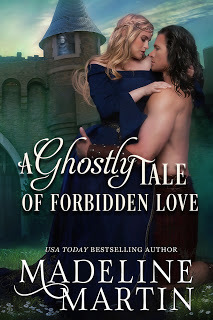
Senara becomes a lady's maid at Castle of Park to help ease the financial burden of her beloved family. She does not expect to have such a wicked mistress any more than she expects to find a handsome laird...or a ghost with a burning need for retribution.
Gavin vowed on his father’s death bed to watch over his aunt, and regrets it every day. Especially when her new maid arrives. The woman is extraordinarily fascinating, which not only stirs his interest, but also his cruel aunt’s ire.
Can he protect Senara from his aunt? Even more important, can he keep himself from giving in to his longing for the country lass?
Theirs is a journey of treacherous pasts, painful loss, hidden longing and vengeance.
Sweet Excerpt:
He plucked a bit of hay from her hair. The slender stalk shook between his fingers. “We canna see one another anymore.” His voice was deep with desire.
Senara nodded in agreement and her hands gripped the banister of the stairs, as if she were holding on for dear life.
They had the same conversation every day. And yet every day at noon, they both arrived.
If he were a lesser man, he'd have had her long ago. But he couldn't in good conscience, not with knowing he would have to marry another someday.
He would marry another, one befitting his station.
Until then, he dreaded the day she would finally not show at noon.
Spooky Excerpt:
A cry sounded in the distance, a wisp of an anguished scream as if carried on a hearty wind. Though far off, the sound scrabbled over her nerves.
No, not so far away. Below.
Senara looked to where the stairs disappeared into a dark nothing. Anything could be in that nothing.Her courage flagged for but a moment. Da would not be frightened of a noise. She may have left his sword upstairs, but she was never without his bravery. Or her dirk for that matter.
With the power of being her father's daughter, she crept down the stairs with her dirk locked in her grip. On the first floor, the air was cold enough to nip at her nose and leave the bottoms of her feet chilled through the thick-soled slippers she wore.
The wailing cry came once more, louder though still distant, muffled almost. She followed the sound down the hall to where she'd been before where the cold stone had hummed against her palm.
The candle flame sputtered and set the narrow hallway bouncing wildly around her, but it did not go out.
Her breath fogged in front of her and hovered in a hazy white cloud. She stared at the frozen breath in wonder. While summer was not always warm, it seldom was ever so cool as to cause such a chill - especially indoors.
A grinding sound filled the quiet and mortar sifted down from the strange stone. Senara's breath came faster and filled the air with white puffs.
Something was in there.
Want to read more? Available in ebook and printAmazon: http://amzn.to/2fzpy5QNook: http://bit.ly/2xkTzzliBooks: http://hyperurl.co/gtflibKobo: http://hyperurl.co/gtflkoboGoogle Play: http://hyperurl.co/gtflgp
 Madeline Martin is a USA TODAY Bestselling author of Scottish set historical romance novels. She lives a glitter-filled life in Jacksonville, Florida with her two daughters (known collectively as the minions) and a man so wonderful he's been dubbed Mr. Awesome. All shenanigans are detailed regularly on Twitter and on Facebook.
Madeline Martin is a USA TODAY Bestselling author of Scottish set historical romance novels. She lives a glitter-filled life in Jacksonville, Florida with her two daughters (known collectively as the minions) and a man so wonderful he's been dubbed Mr. Awesome. All shenanigans are detailed regularly on Twitter and on Facebook.
Madeline loves animals in sweaters, cat videos, wine and Nutella. Check out her FB page on any given Friday to see what great new book she's giving away by one of her fellow authors.
She also loves connecting with her readers, so feel free to follow her on any one of her social media platforms, or send her a message :)
FB page: https://www.facebook.com/MadelineMart... @MadelineMMartinSign up for her newsletter: http://eepurl.com/biji1j

Europe has no shortage of ancient castles and dwellings, and where there are ancient settings, there are ghosts.
I think one of the things that fascinates me so much about ghost stories is the full on romanticism behind them. Most are driven by and explosion of passion, propelled by love or hate or sheer envy. The stories behind them are rife with drama and intrigue and desire.
In researching ghost stories for this book to decide where to set it, I found a couple of interesting facts to share with people.

First of all, is that Queen Mary of Scots has several ghost stories. She’s reported to haunt Borthwick Castle dressed as a page boy (the way she’d managed her escape in life once before). She’s also reported to haunt Stirling Castle as the pink lady. A hotel in Oundlel in Northhamptonshire, England also claims she haunts their halls where the staircase from Forthinghay Castle had been transported and incorporated into the building. Have you heard of other stories where Queen Mary of Scots has done some haunting?

Secondly, are all the ladies dressed in green. There are seriously a lot of ghostly women in green. And there’s a reason for this. Green is thought to be a color of ill luck in the Celtic legends as it was considered the favorite color of the fae people – and everyone knew they were deviously mischievous. And, of course, ghosts have a tendency to also be deviously mischievous.
I decided to go with Castle of Park for my castle with A Ghostly Tale of Forbidden Love because the story involved had not one, but two ghosts. The first was a green lady who had apparently been the lover of the laird, however, when she found herself with child, she was terminated from her position there. Unable to take the despair of her circumstances, she threw herself from one of the upper story windows to her death. The second ghost was a monk who had been walled up within the castle.
I loved the idea of the green lady getting her own form of vengeance, but felt the ghost story still needed to be made whole. This was what inspired my twist in A Ghostly Tale of Forbidden Love. But I can’t tell you what it is, or I’ll ruin all the fun. I hope you enjoy what I’ve done with the story. I truly had so much fun writing a little paranormal spookiness into this novella.

Senara becomes a lady's maid at Castle of Park to help ease the financial burden of her beloved family. She does not expect to have such a wicked mistress any more than she expects to find a handsome laird...or a ghost with a burning need for retribution.
Gavin vowed on his father’s death bed to watch over his aunt, and regrets it every day. Especially when her new maid arrives. The woman is extraordinarily fascinating, which not only stirs his interest, but also his cruel aunt’s ire.
Can he protect Senara from his aunt? Even more important, can he keep himself from giving in to his longing for the country lass?
Theirs is a journey of treacherous pasts, painful loss, hidden longing and vengeance.
Sweet Excerpt:
He plucked a bit of hay from her hair. The slender stalk shook between his fingers. “We canna see one another anymore.” His voice was deep with desire.
Senara nodded in agreement and her hands gripped the banister of the stairs, as if she were holding on for dear life.
They had the same conversation every day. And yet every day at noon, they both arrived.
If he were a lesser man, he'd have had her long ago. But he couldn't in good conscience, not with knowing he would have to marry another someday.
He would marry another, one befitting his station.
Until then, he dreaded the day she would finally not show at noon.
Spooky Excerpt:
A cry sounded in the distance, a wisp of an anguished scream as if carried on a hearty wind. Though far off, the sound scrabbled over her nerves.
No, not so far away. Below.
Senara looked to where the stairs disappeared into a dark nothing. Anything could be in that nothing.Her courage flagged for but a moment. Da would not be frightened of a noise. She may have left his sword upstairs, but she was never without his bravery. Or her dirk for that matter.
With the power of being her father's daughter, she crept down the stairs with her dirk locked in her grip. On the first floor, the air was cold enough to nip at her nose and leave the bottoms of her feet chilled through the thick-soled slippers she wore.
The wailing cry came once more, louder though still distant, muffled almost. She followed the sound down the hall to where she'd been before where the cold stone had hummed against her palm.
The candle flame sputtered and set the narrow hallway bouncing wildly around her, but it did not go out.
Her breath fogged in front of her and hovered in a hazy white cloud. She stared at the frozen breath in wonder. While summer was not always warm, it seldom was ever so cool as to cause such a chill - especially indoors.
A grinding sound filled the quiet and mortar sifted down from the strange stone. Senara's breath came faster and filled the air with white puffs.
Something was in there.
Want to read more? Available in ebook and printAmazon: http://amzn.to/2fzpy5QNook: http://bit.ly/2xkTzzliBooks: http://hyperurl.co/gtflibKobo: http://hyperurl.co/gtflkoboGoogle Play: http://hyperurl.co/gtflgp
 Madeline Martin is a USA TODAY Bestselling author of Scottish set historical romance novels. She lives a glitter-filled life in Jacksonville, Florida with her two daughters (known collectively as the minions) and a man so wonderful he's been dubbed Mr. Awesome. All shenanigans are detailed regularly on Twitter and on Facebook.
Madeline Martin is a USA TODAY Bestselling author of Scottish set historical romance novels. She lives a glitter-filled life in Jacksonville, Florida with her two daughters (known collectively as the minions) and a man so wonderful he's been dubbed Mr. Awesome. All shenanigans are detailed regularly on Twitter and on Facebook.Madeline loves animals in sweaters, cat videos, wine and Nutella. Check out her FB page on any given Friday to see what great new book she's giving away by one of her fellow authors.
She also loves connecting with her readers, so feel free to follow her on any one of her social media platforms, or send her a message :)
FB page: https://www.facebook.com/MadelineMart... @MadelineMMartinSign up for her newsletter: http://eepurl.com/biji1j
Published on September 21, 2017 00:00
September 19, 2017
Celebrate International Talk Like A Pirate Day
Arrr! Today, September 19th, is International Talk Like A Pirate Day! Yes, there is such a thing. It’s been a thing for 22 years. Read how it all started HERE.
 Read More
HERE
So what do you do on International Talk Like a Pirate Day? Talk, dress, and act like a pirate, of course. Sounds like fun, right? Wouldn’t it be awesome to go to work, perch yer booted foot atop yer desk, and order around the scurvy landlubbers in the office, threatenin’ them with the business end of yer cutlass? Or how about plunderin’ the liquor store shelves of grog, rum, and other sundries, and payin’ for it with coins from yer leather pouch? Or servin’ up vittles for yer crew while singin’ sea shanties? Or hangin’ out the driver’s window of yer vehicle hollerin’ “bring me the horizon,” “it’s a pirate’s life for me,” and “move yer aft end!” Aye, me hearties, there’s tomfoolery to be had.
Read More
HERE
So what do you do on International Talk Like a Pirate Day? Talk, dress, and act like a pirate, of course. Sounds like fun, right? Wouldn’t it be awesome to go to work, perch yer booted foot atop yer desk, and order around the scurvy landlubbers in the office, threatenin’ them with the business end of yer cutlass? Or how about plunderin’ the liquor store shelves of grog, rum, and other sundries, and payin’ for it with coins from yer leather pouch? Or servin’ up vittles for yer crew while singin’ sea shanties? Or hangin’ out the driver’s window of yer vehicle hollerin’ “bring me the horizon,” “it’s a pirate’s life for me,” and “move yer aft end!” Aye, me hearties, there’s tomfoolery to be had.
Need help with yer buccaneer vernacular? Check out this spot-on, cheeky how-to video in proper pirate jargon.
If dressing and talking like a pirate isn’t practical for ye, my pity to ye mate. But ye can still have some pirate merriment.
Ye could:
Nab yerself a pirate nameGet in touch with yer Inner Pirate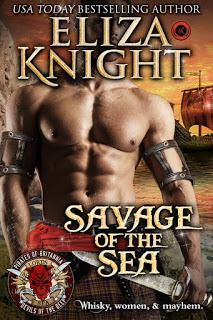 Read more
HERE
Read more
HERE
OR...
...escape into worlds full of adventure, rum, fearless pirates, spirited wenches, and swoon-worthy, Romancing the Pirate and Pirates of Britannia: Lords of the Seas. Eliza Knight and I will leave you breathless and wanting more swashbuckling mayhem.
Grab your copy of The Laird's Reckoning now and pre-order a copy of Savage of the Sea.
Happy International Talk Like A Pirate Day, mates!
About the Author
 Jennifer is the award-winning author of the Romancing the Pirate series. Visit her at www.jbrayweber.com or join her mailing list for sneak peeks, excerpts, and giveaways
Jennifer is the award-winning author of the Romancing the Pirate series. Visit her at www.jbrayweber.com or join her mailing list for sneak peeks, excerpts, and giveaways
 Read More
HERE
So what do you do on International Talk Like a Pirate Day? Talk, dress, and act like a pirate, of course. Sounds like fun, right? Wouldn’t it be awesome to go to work, perch yer booted foot atop yer desk, and order around the scurvy landlubbers in the office, threatenin’ them with the business end of yer cutlass? Or how about plunderin’ the liquor store shelves of grog, rum, and other sundries, and payin’ for it with coins from yer leather pouch? Or servin’ up vittles for yer crew while singin’ sea shanties? Or hangin’ out the driver’s window of yer vehicle hollerin’ “bring me the horizon,” “it’s a pirate’s life for me,” and “move yer aft end!” Aye, me hearties, there’s tomfoolery to be had.
Read More
HERE
So what do you do on International Talk Like a Pirate Day? Talk, dress, and act like a pirate, of course. Sounds like fun, right? Wouldn’t it be awesome to go to work, perch yer booted foot atop yer desk, and order around the scurvy landlubbers in the office, threatenin’ them with the business end of yer cutlass? Or how about plunderin’ the liquor store shelves of grog, rum, and other sundries, and payin’ for it with coins from yer leather pouch? Or servin’ up vittles for yer crew while singin’ sea shanties? Or hangin’ out the driver’s window of yer vehicle hollerin’ “bring me the horizon,” “it’s a pirate’s life for me,” and “move yer aft end!” Aye, me hearties, there’s tomfoolery to be had.Need help with yer buccaneer vernacular? Check out this spot-on, cheeky how-to video in proper pirate jargon.
If dressing and talking like a pirate isn’t practical for ye, my pity to ye mate. But ye can still have some pirate merriment.
Ye could:
Nab yerself a pirate nameGet in touch with yer Inner Pirate
 Read more
HERE
Read more
HERE
OR...
...escape into worlds full of adventure, rum, fearless pirates, spirited wenches, and swoon-worthy, Romancing the Pirate and Pirates of Britannia: Lords of the Seas. Eliza Knight and I will leave you breathless and wanting more swashbuckling mayhem.
Grab your copy of The Laird's Reckoning now and pre-order a copy of Savage of the Sea.
Happy International Talk Like A Pirate Day, mates!
About the Author
 Jennifer is the award-winning author of the Romancing the Pirate series. Visit her at www.jbrayweber.com or join her mailing list for sneak peeks, excerpts, and giveaways
Jennifer is the award-winning author of the Romancing the Pirate series. Visit her at www.jbrayweber.com or join her mailing list for sneak peeks, excerpts, and giveaways
Published on September 19, 2017 01:30
September 5, 2017
ACCIDENTAL DISCOVERIES IN HISTORY by Kathleen Bittner Roth
ACCIDENTAL DISCOVERIES IN HISTORY
by Kathleen Bittner Roth
Some of the longest lasting inventions or discoveries in history came about either entirely by accident or were meant for other purposes. Here are a surprising few:

COCA COLA
You can thank John Stith Pemberton’s morphine addiction for Coca Cola. A pharmacist from Atlanta, he set about trying to break his terrible addiction by developing a new drug to treat the habit. He tried one combination after another until he came up with a thick syrup made from coca leaves, caffeine, a kola nut extract, vegetable extracts, and plain sugar. Initially sold from his pharmacy, this medicine soon became quite popular. One day a waiter, nearly out of the medicine, but needing to finish his shift, diluted the syrup with a sparkling water as an extender, and voila! Pemberton officially branded Coca-Cola in 1887 under the federal trade registry.
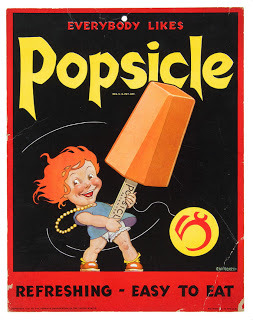
POPSICLES
San Francisco native, Frank Epperson, concocted a drink made up of powdered soda and water. One night in 1905, he accidentally left a jar of his favorite drink outside in the coldest night of the year. Popping his head out the door the next morning, he discovered his drink had frozen around the wooden stick he’d used to stir the concoction. In 1924, he patented the “Epsicle Ice Pop.” Several years later his children encouraged their “Pop” to rename his invention the Popsicle.
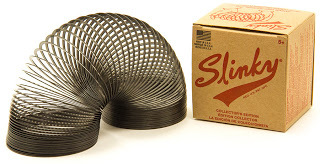
SLINKY
In 1943, Richard James, an American naval engineer, had the assignment of developing large springs to transport fragile engineering instruments aboard water going vessels. As the springs were being loaded onto a ship, one of the springs fell out of the box. Down the steps it went with James scrambling after it. What a sight! His co-workers thought the whole incident hilarious. James went home, and over dinner, told his family about his day at work. One of his children said he wanted one to play with. It was then that James decided to patent the idea as a toy, and the Slinky was born.
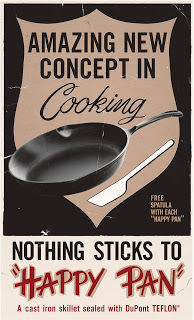
TEFLON PANS
Teflon pans actually came into existence way back in 1938 when Roy Plunkett, a chemist, began experimenting with refrigerants. He ran across a pipe in his laboratory filled with a frozen compound called tetrafluoroethylene. Curious as to why no gas had escaped, he began playing with the tube. When he shook it, he noticed that small white fragments had stuck to the surface. That’s when Teflon was born.
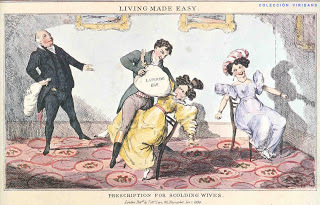
LAUGHING GAS
Nitrous oxide, also known as laughing gas, was invented in 1776 by Joseph Priestly. His invention was used for entertainment at parties, and at the fairgrounds. Dr. Horace Wells, an American dentist, was attending one of Priestly’s wild parties. He figured out that when under the influence of this gas, that people were numb to pain. Doctor Wells returned to America, and in 1844, he began using the gas on his patients as an anesthetic.
ERASERS
Did you know that before the invention of the erasure, people used breadcrumbs to eradicate ink stains? Back in 1770, Edward Naime, an Englishman, accidentally mistook rubber tree resin for breadcrumbs and found it worked better than bread crumbs. Soon, he began selling rubber erasers. It wasn’t until much later that Kaspar Faber, a German pencil maker, figured out a way to attach an erasure directly onto his pencils.
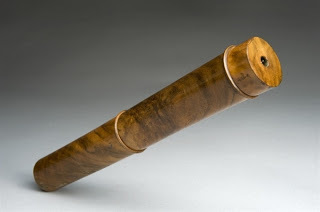
STETHOSCOPE
A French doctor, Rene Laennec, discovered a new method of listening to the heartbeats of his weightier patients by watching children playing with a needle stuck into a wooden plank. The sound resonated from one side of the beam to the other. Dr. Laennec had the idea to fix the wooden plank with the needle attached inside a tube, and the first stethoscope was born. The round wooden tube was placed on the patient’s chest, and the doctor placed his ear on the opposite end. Eventually, the round wooden tube was dramatically changed to what it looks like today.

CHAMPAIGNE
Dom Perignon, a Benedict Monk living in a monastery in Hautvilliers, France, discovered the secret of in-bottle fermentation quite by accident. He was looking for an alternative to wooden corks for wine when he tried pouring beeswax into the neck of the bottle. A few weeks later, pressure built up inside the bottles and they exploded. The contents bubbled out over the top of the bottle and the good old monk tried catching the bubbly with his tongue. This is when he discovered the sparkling wine’s delicious effervescence.
Kathleen Bittner Roth creates evocative stories featuring characters forced to draw on their strength of spirit to overcome adversity and find unending love. Her own fairy tale wedding in a Scottish castle led her to her current residence in Budapest, Hungary, considered one of Europe’s most romantic cities. A PAN member of Romance Writers of America®, Kathleen was a finalist in the prestigious Golden Heart® contest.
You can find Kathleen at:
Website: www.kathleenbittnerroth.comFacebook: facebook.com/Kathleen.bittnerroth.authorTwitter: @K_BittnerRothBook trailer: https://www.youtube.com/watch?v=GzWQNWFHvhUPinterest https://hu.pinterest.com/bittnerroth/Goodreads https://www.goodreads.com/author/show/7306082.Kathleen_Bittner_Roth
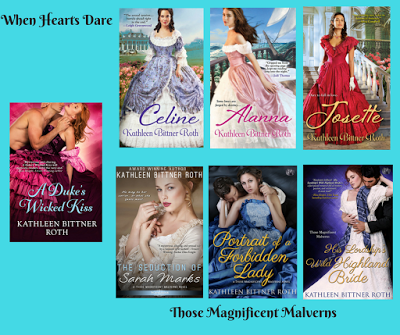
Some of the longest lasting inventions or discoveries in history came about either entirely by accident or were meant for other purposes. Here are a surprising few:

COCA COLA
You can thank John Stith Pemberton’s morphine addiction for Coca Cola. A pharmacist from Atlanta, he set about trying to break his terrible addiction by developing a new drug to treat the habit. He tried one combination after another until he came up with a thick syrup made from coca leaves, caffeine, a kola nut extract, vegetable extracts, and plain sugar. Initially sold from his pharmacy, this medicine soon became quite popular. One day a waiter, nearly out of the medicine, but needing to finish his shift, diluted the syrup with a sparkling water as an extender, and voila! Pemberton officially branded Coca-Cola in 1887 under the federal trade registry.

POPSICLES
San Francisco native, Frank Epperson, concocted a drink made up of powdered soda and water. One night in 1905, he accidentally left a jar of his favorite drink outside in the coldest night of the year. Popping his head out the door the next morning, he discovered his drink had frozen around the wooden stick he’d used to stir the concoction. In 1924, he patented the “Epsicle Ice Pop.” Several years later his children encouraged their “Pop” to rename his invention the Popsicle.

SLINKY
In 1943, Richard James, an American naval engineer, had the assignment of developing large springs to transport fragile engineering instruments aboard water going vessels. As the springs were being loaded onto a ship, one of the springs fell out of the box. Down the steps it went with James scrambling after it. What a sight! His co-workers thought the whole incident hilarious. James went home, and over dinner, told his family about his day at work. One of his children said he wanted one to play with. It was then that James decided to patent the idea as a toy, and the Slinky was born.

TEFLON PANS
Teflon pans actually came into existence way back in 1938 when Roy Plunkett, a chemist, began experimenting with refrigerants. He ran across a pipe in his laboratory filled with a frozen compound called tetrafluoroethylene. Curious as to why no gas had escaped, he began playing with the tube. When he shook it, he noticed that small white fragments had stuck to the surface. That’s when Teflon was born.

LAUGHING GAS
Nitrous oxide, also known as laughing gas, was invented in 1776 by Joseph Priestly. His invention was used for entertainment at parties, and at the fairgrounds. Dr. Horace Wells, an American dentist, was attending one of Priestly’s wild parties. He figured out that when under the influence of this gas, that people were numb to pain. Doctor Wells returned to America, and in 1844, he began using the gas on his patients as an anesthetic.
ERASERS
Did you know that before the invention of the erasure, people used breadcrumbs to eradicate ink stains? Back in 1770, Edward Naime, an Englishman, accidentally mistook rubber tree resin for breadcrumbs and found it worked better than bread crumbs. Soon, he began selling rubber erasers. It wasn’t until much later that Kaspar Faber, a German pencil maker, figured out a way to attach an erasure directly onto his pencils.

STETHOSCOPE
A French doctor, Rene Laennec, discovered a new method of listening to the heartbeats of his weightier patients by watching children playing with a needle stuck into a wooden plank. The sound resonated from one side of the beam to the other. Dr. Laennec had the idea to fix the wooden plank with the needle attached inside a tube, and the first stethoscope was born. The round wooden tube was placed on the patient’s chest, and the doctor placed his ear on the opposite end. Eventually, the round wooden tube was dramatically changed to what it looks like today.

CHAMPAIGNE
Dom Perignon, a Benedict Monk living in a monastery in Hautvilliers, France, discovered the secret of in-bottle fermentation quite by accident. He was looking for an alternative to wooden corks for wine when he tried pouring beeswax into the neck of the bottle. A few weeks later, pressure built up inside the bottles and they exploded. The contents bubbled out over the top of the bottle and the good old monk tried catching the bubbly with his tongue. This is when he discovered the sparkling wine’s delicious effervescence.
Kathleen Bittner Roth creates evocative stories featuring characters forced to draw on their strength of spirit to overcome adversity and find unending love. Her own fairy tale wedding in a Scottish castle led her to her current residence in Budapest, Hungary, considered one of Europe’s most romantic cities. A PAN member of Romance Writers of America®, Kathleen was a finalist in the prestigious Golden Heart® contest.
You can find Kathleen at:
Website: www.kathleenbittnerroth.comFacebook: facebook.com/Kathleen.bittnerroth.authorTwitter: @K_BittnerRothBook trailer: https://www.youtube.com/watch?v=GzWQNWFHvhUPinterest https://hu.pinterest.com/bittnerroth/Goodreads https://www.goodreads.com/author/show/7306082.Kathleen_Bittner_Roth

Published on September 05, 2017 00:30



